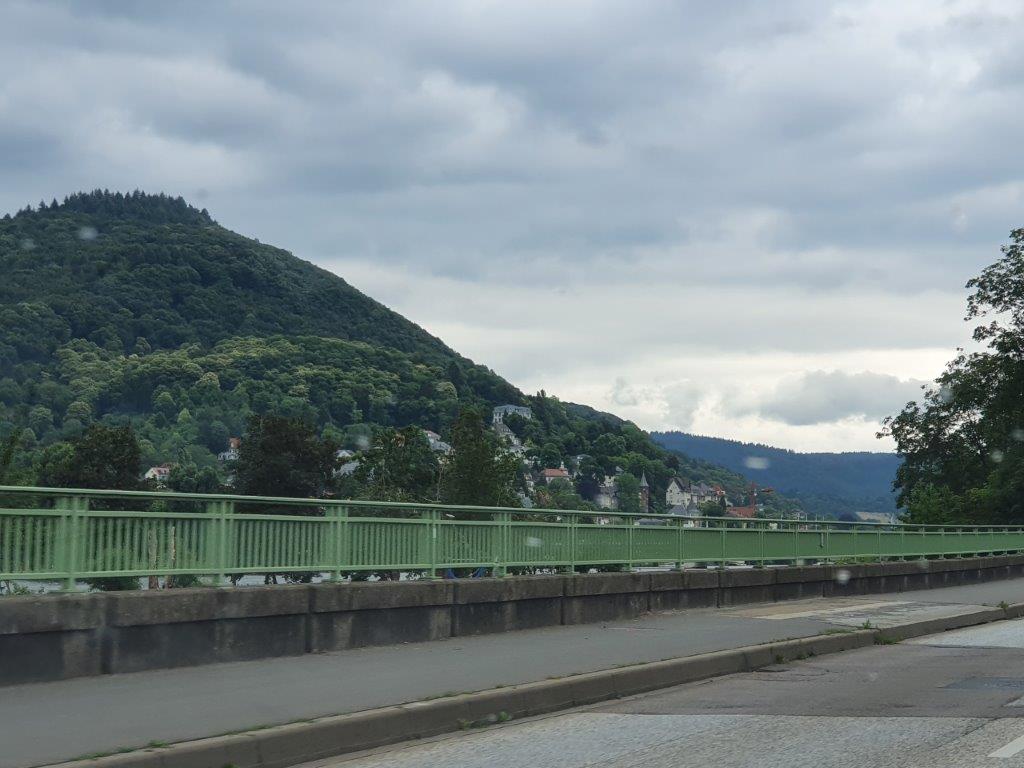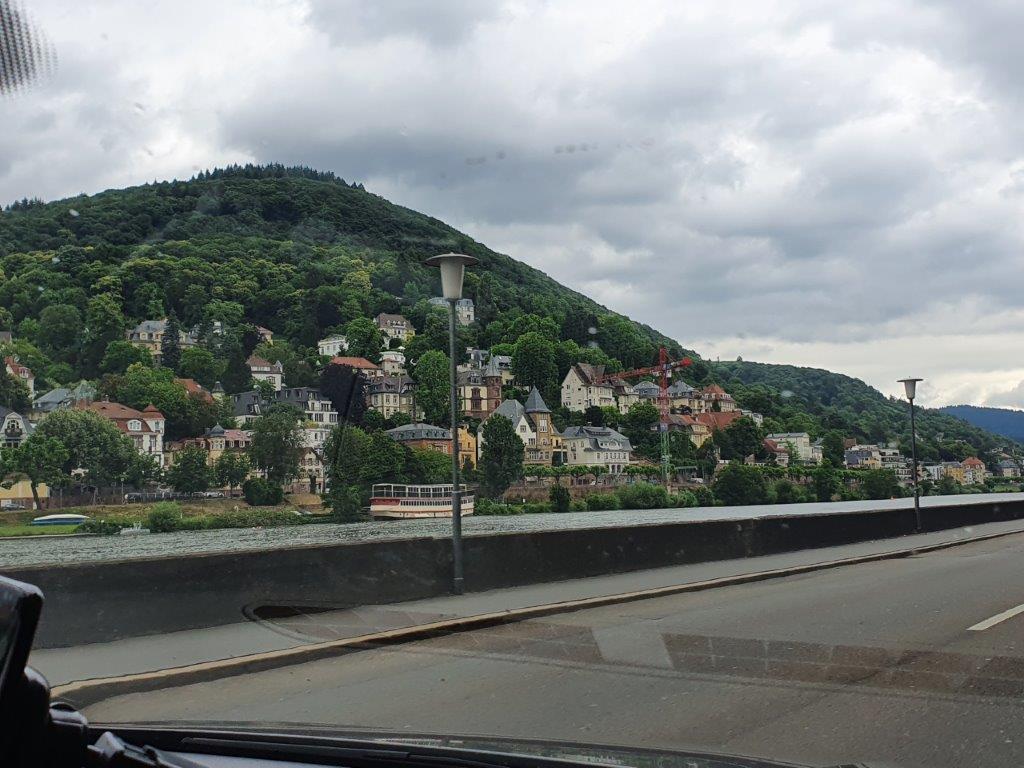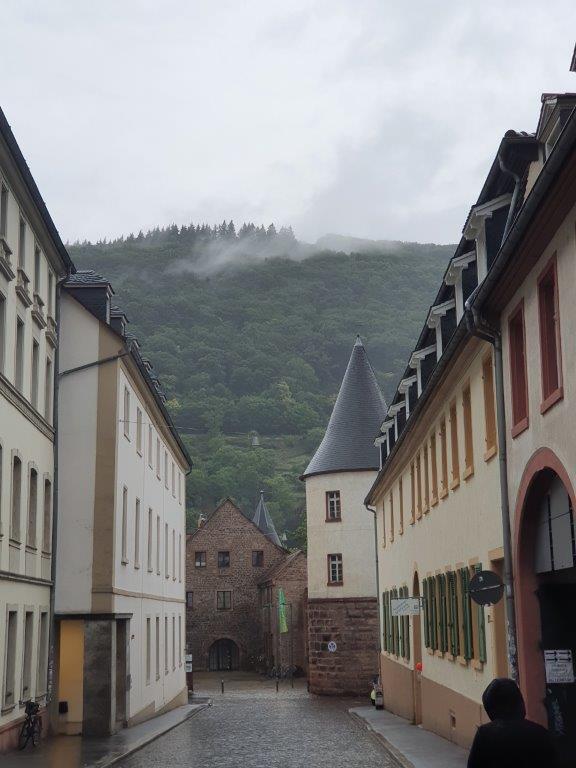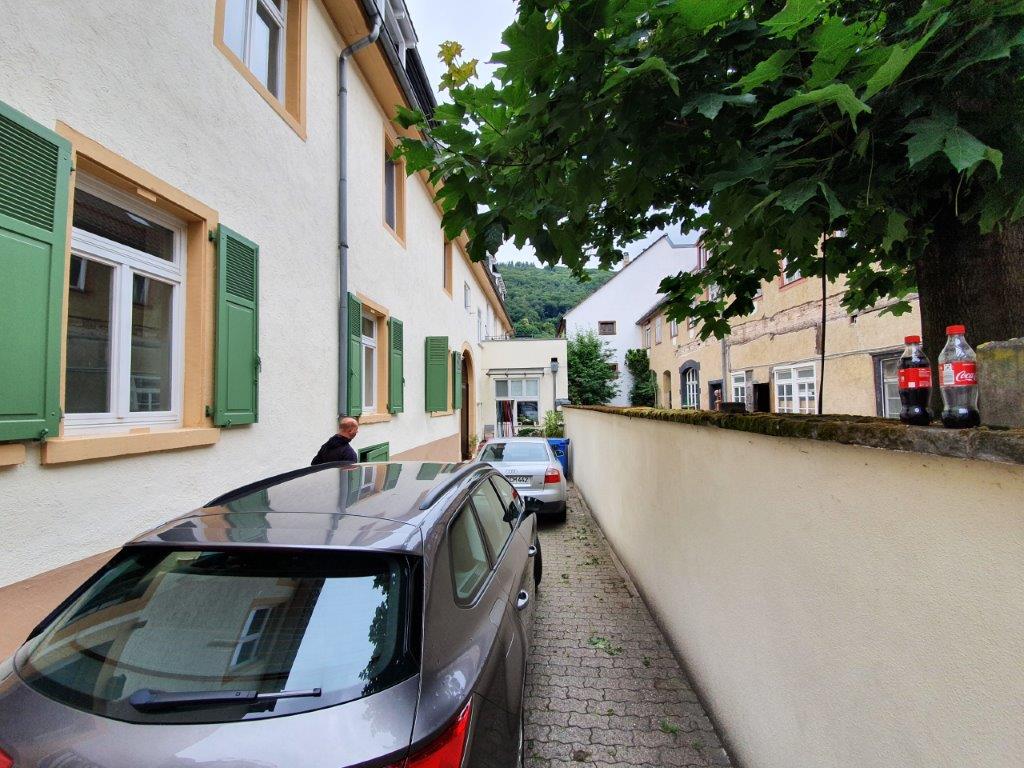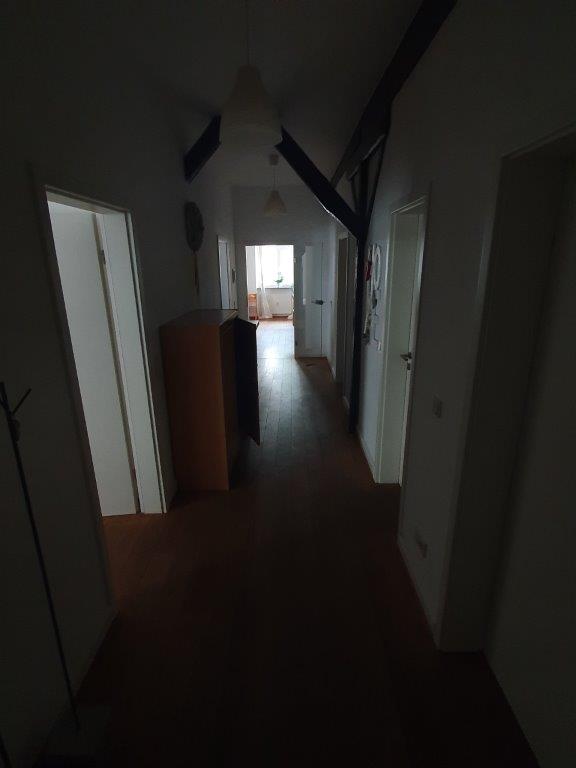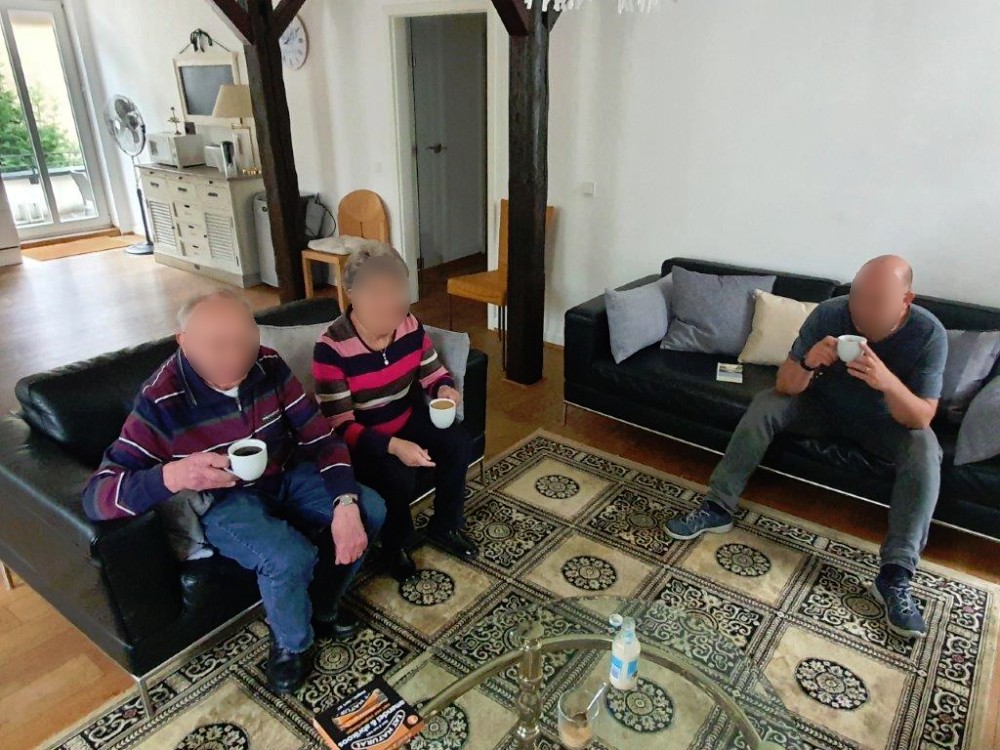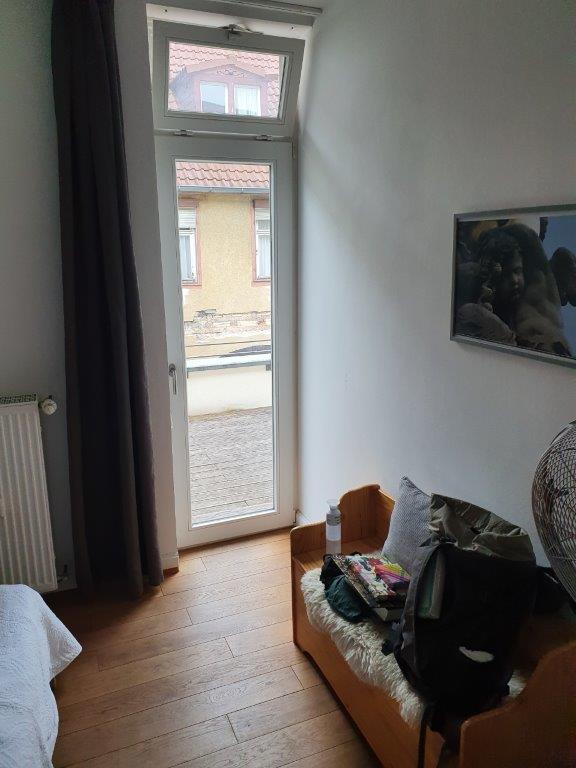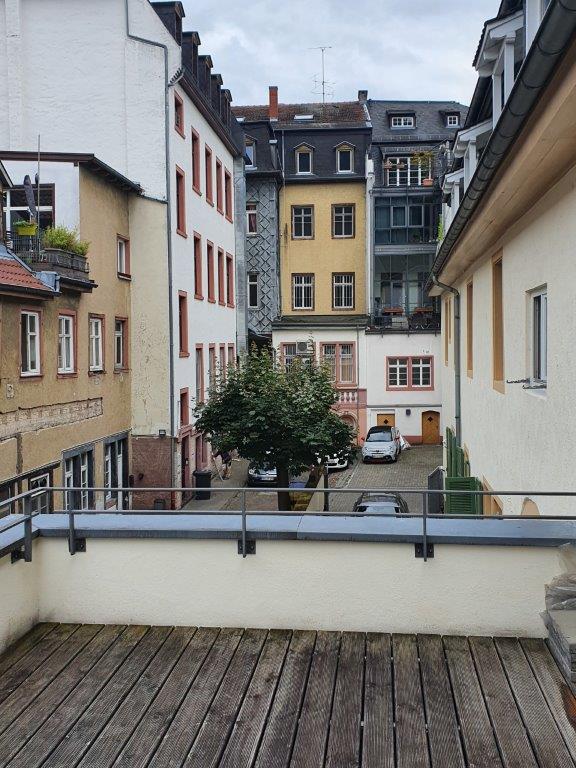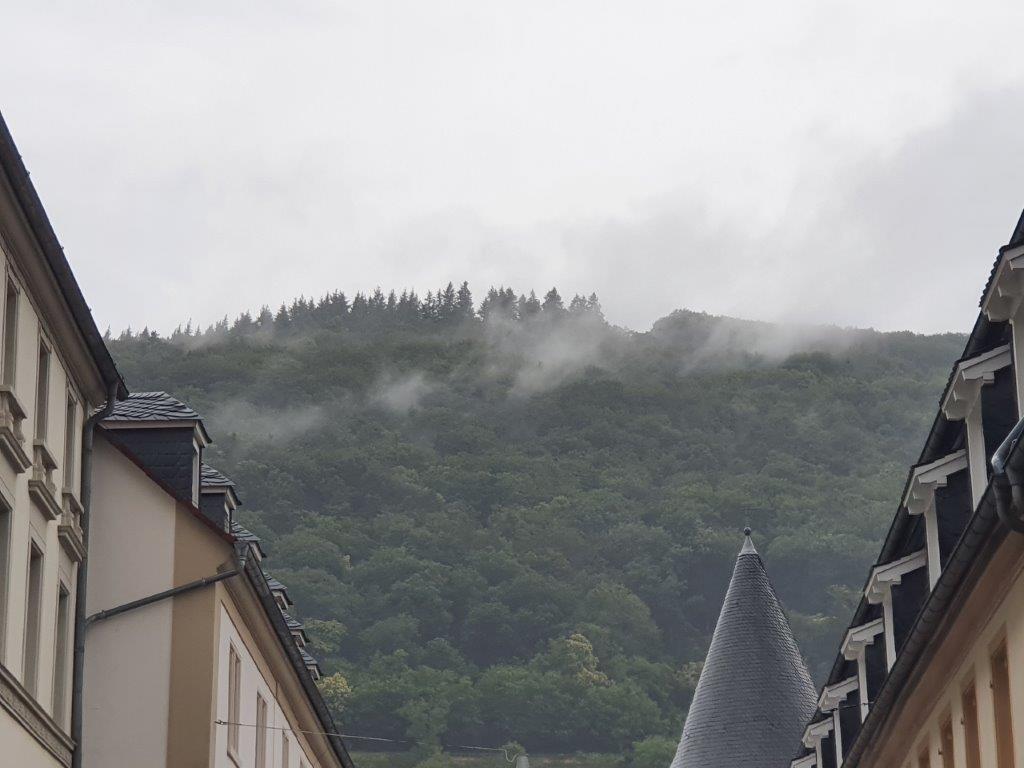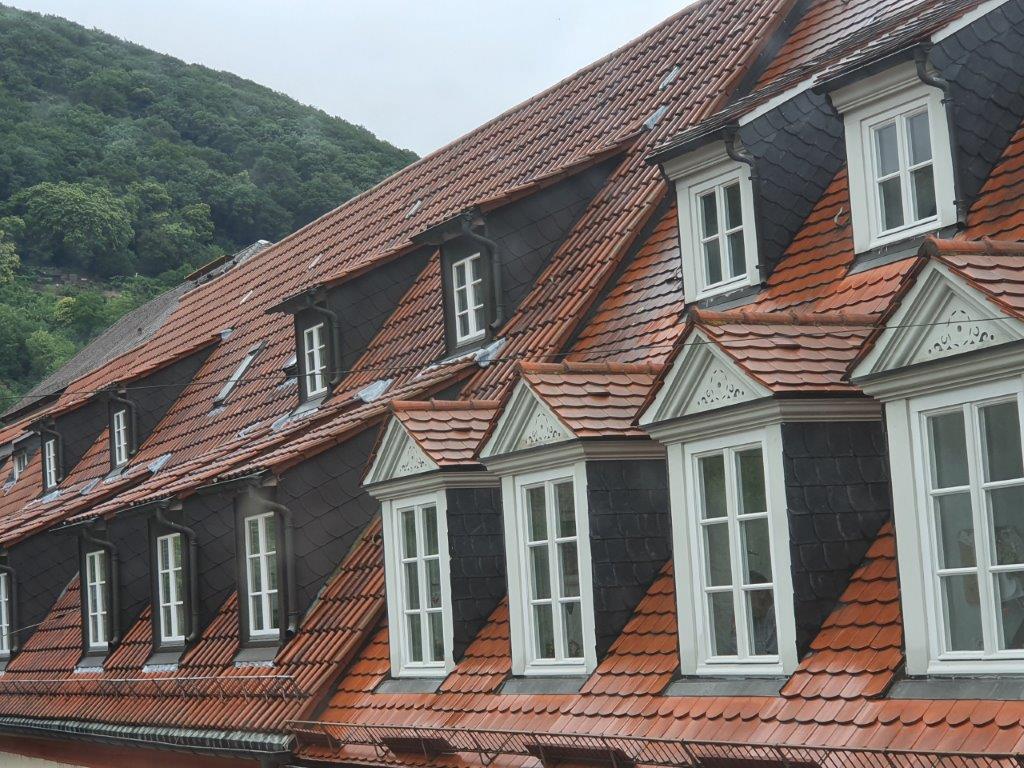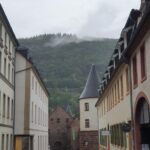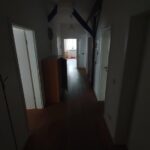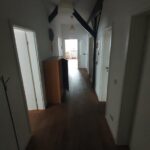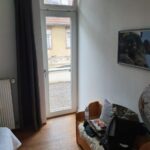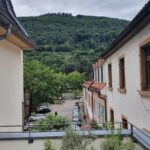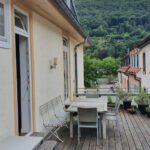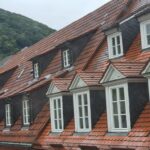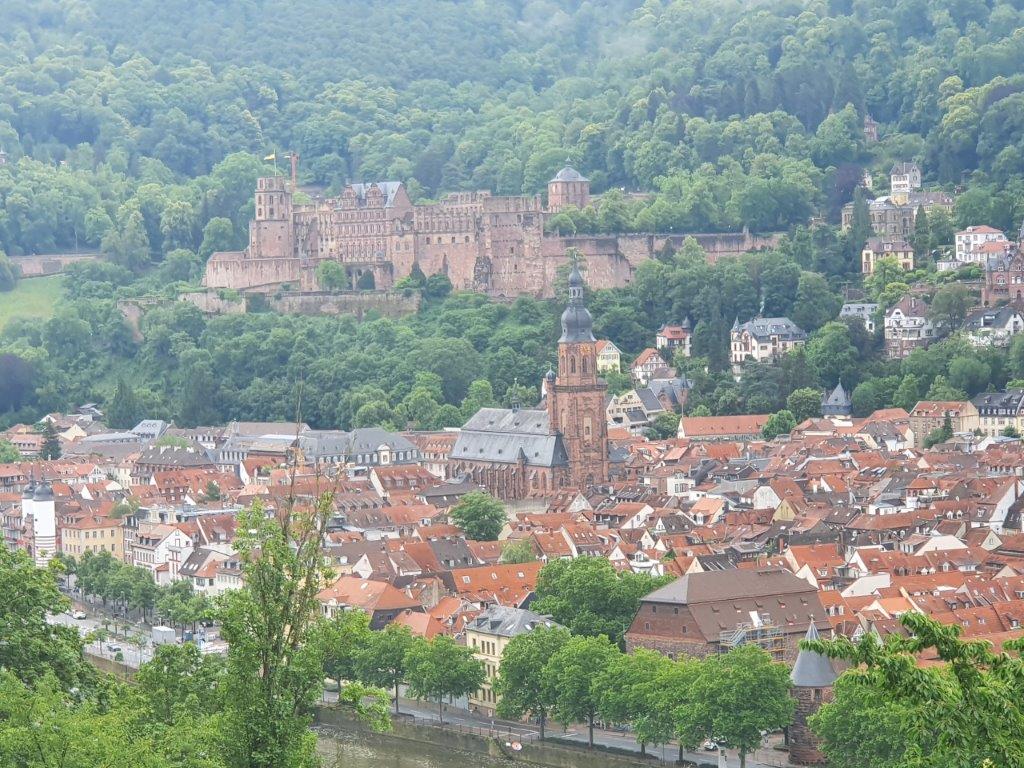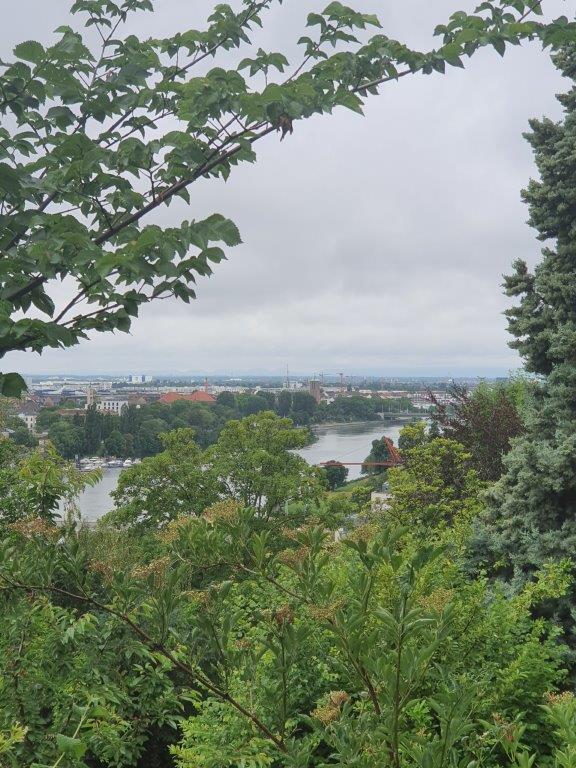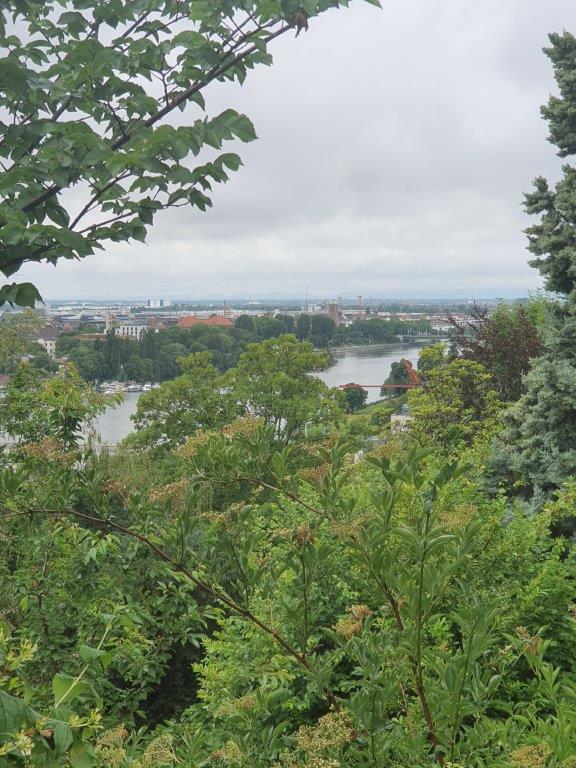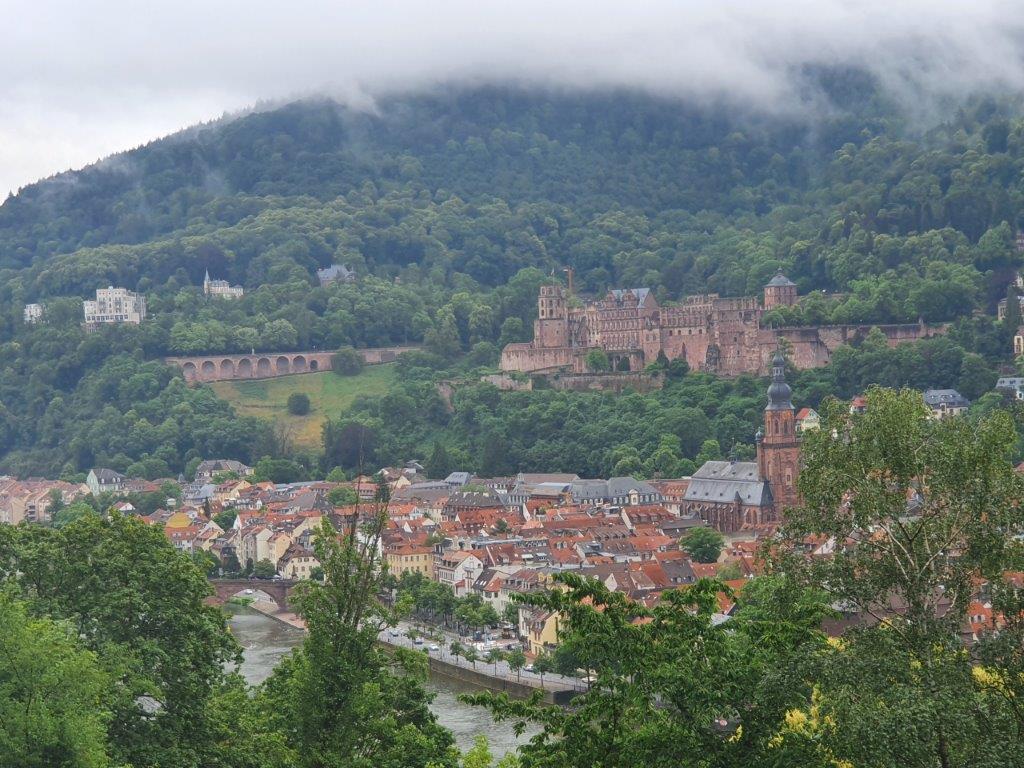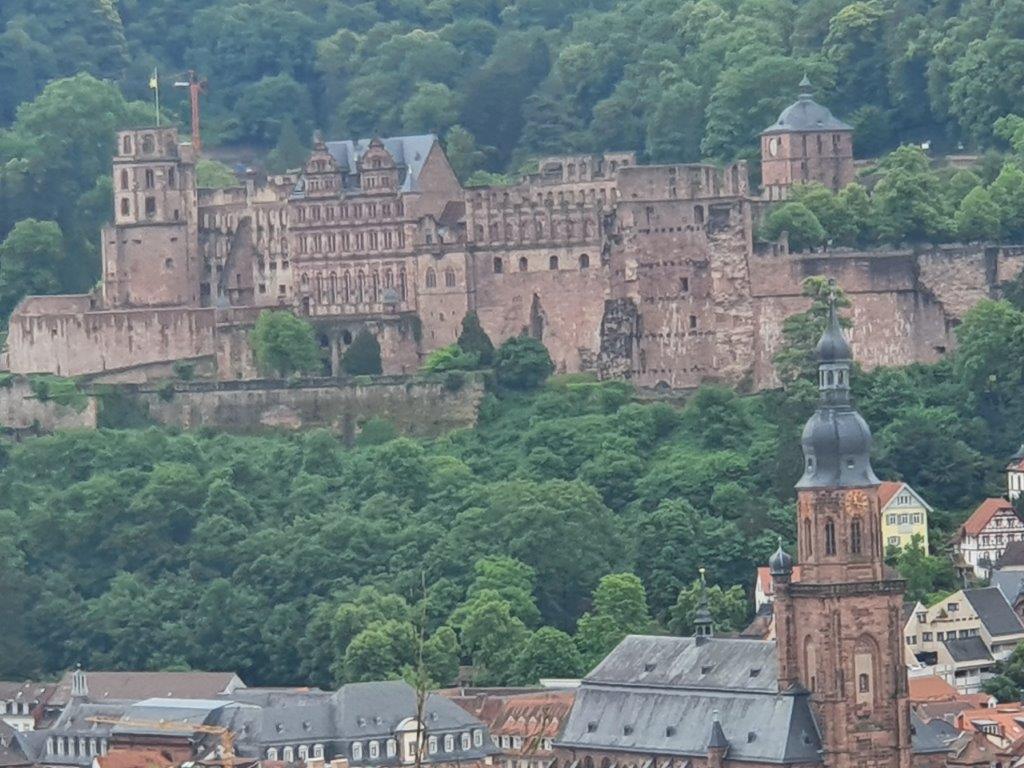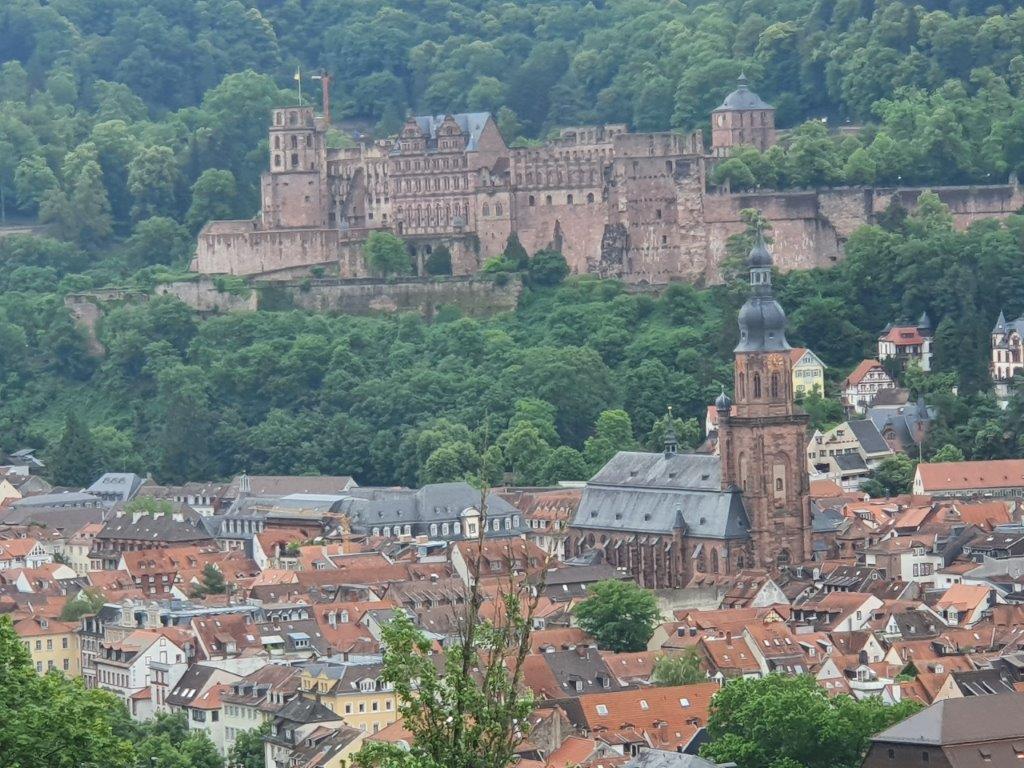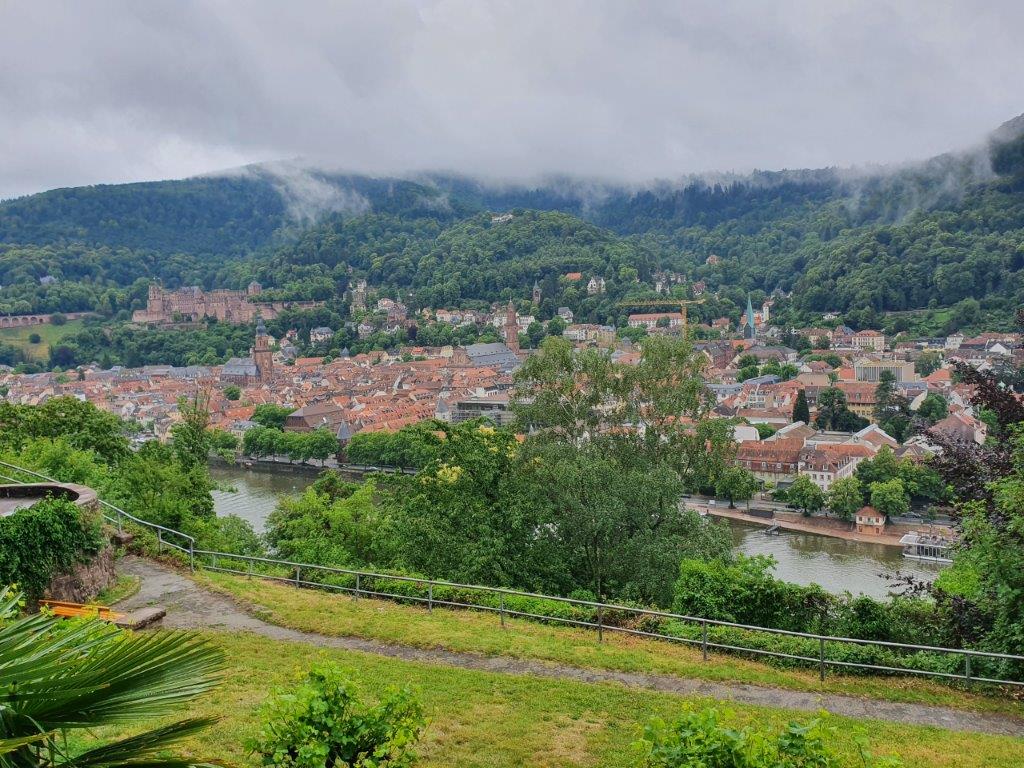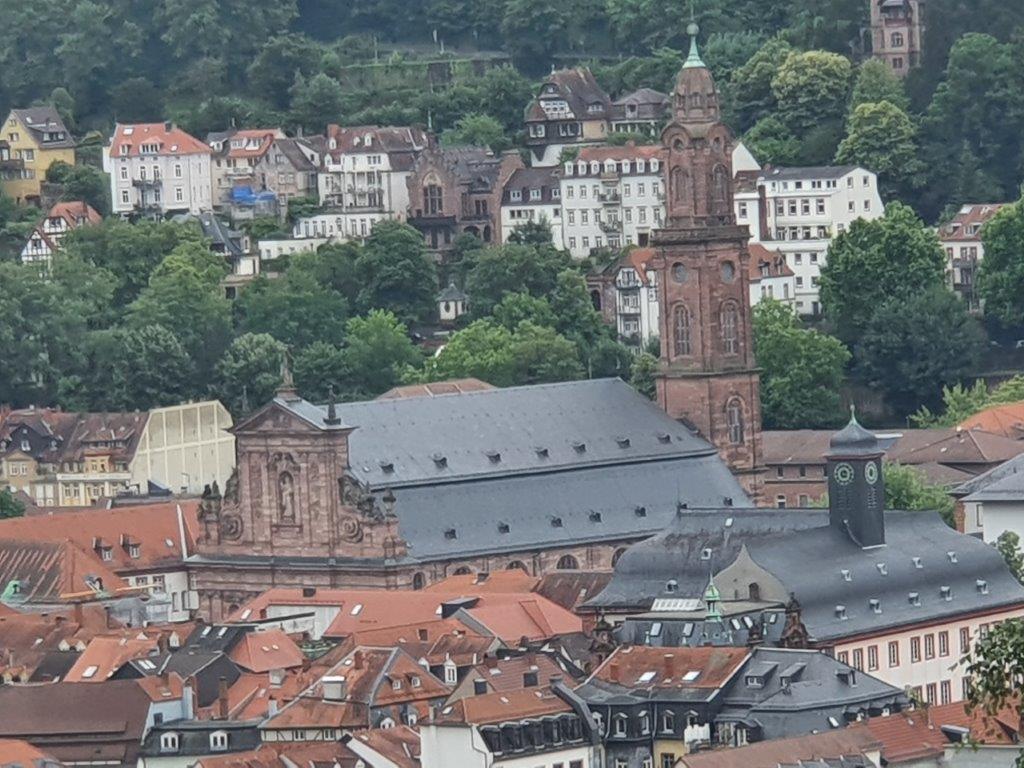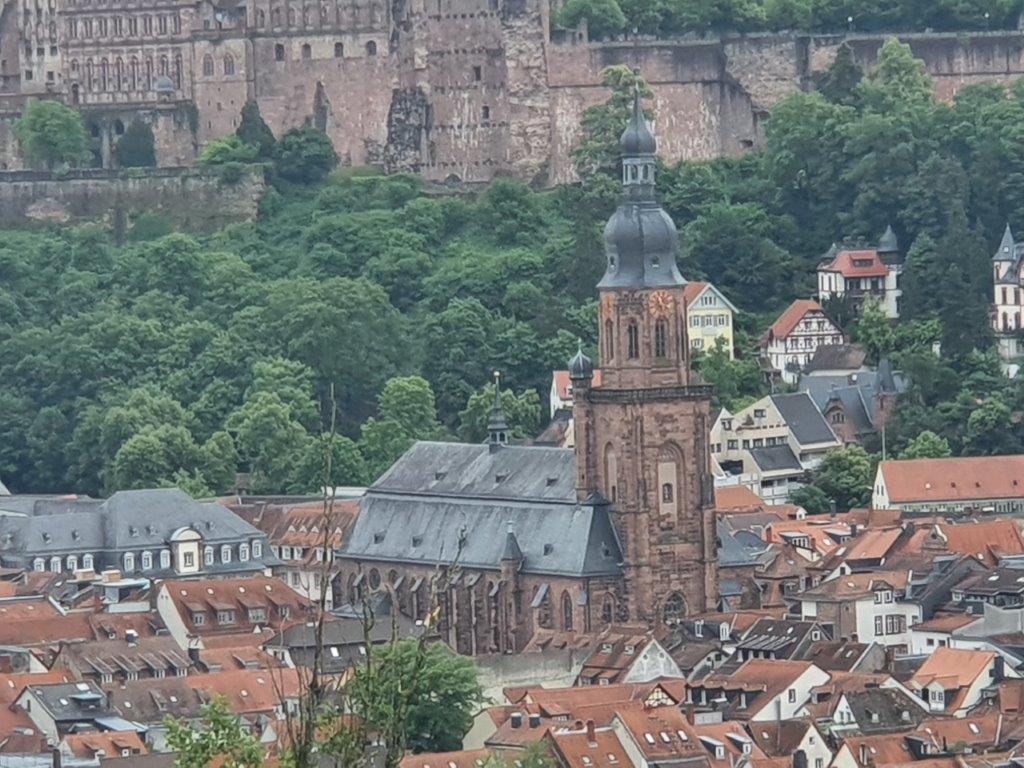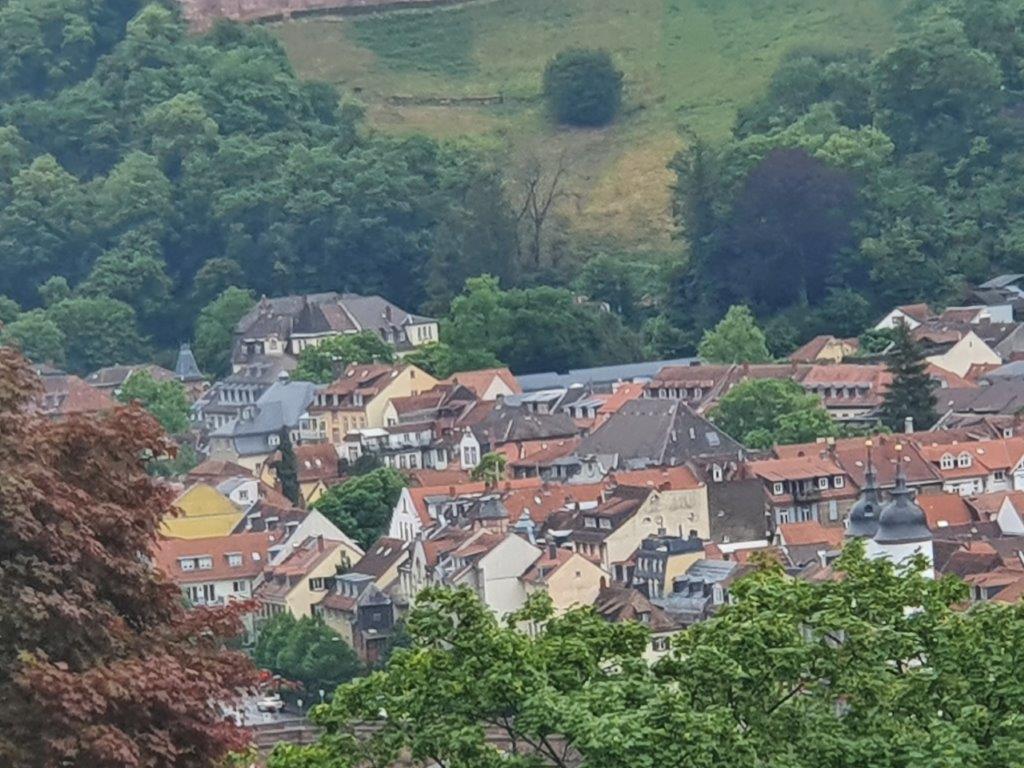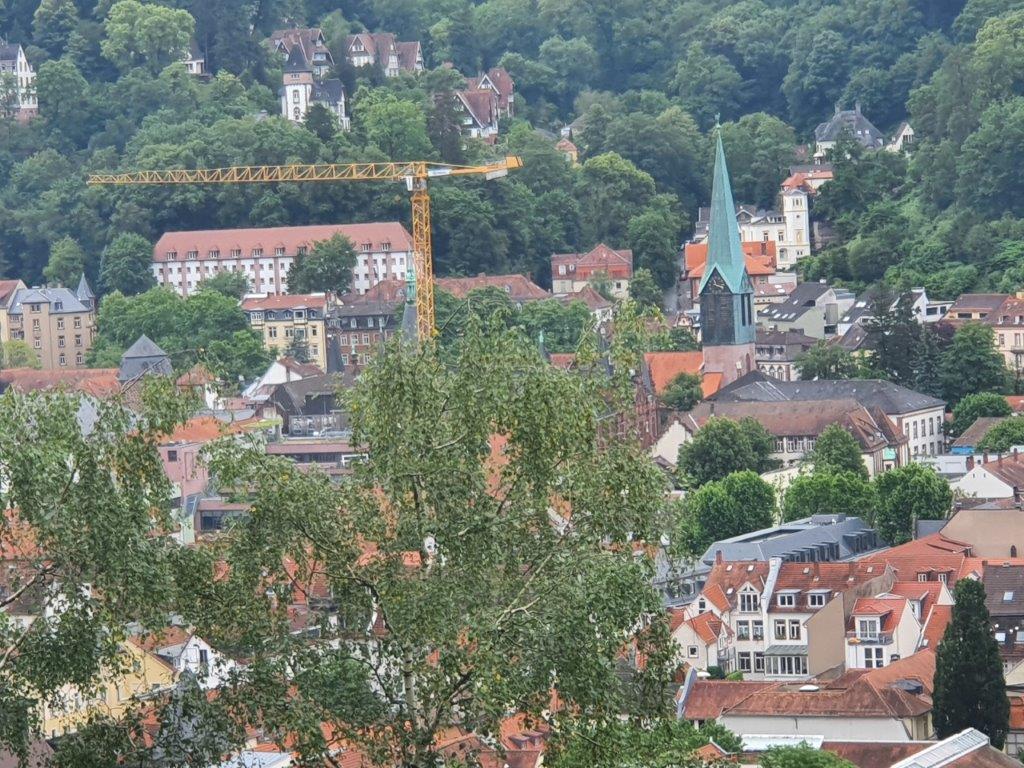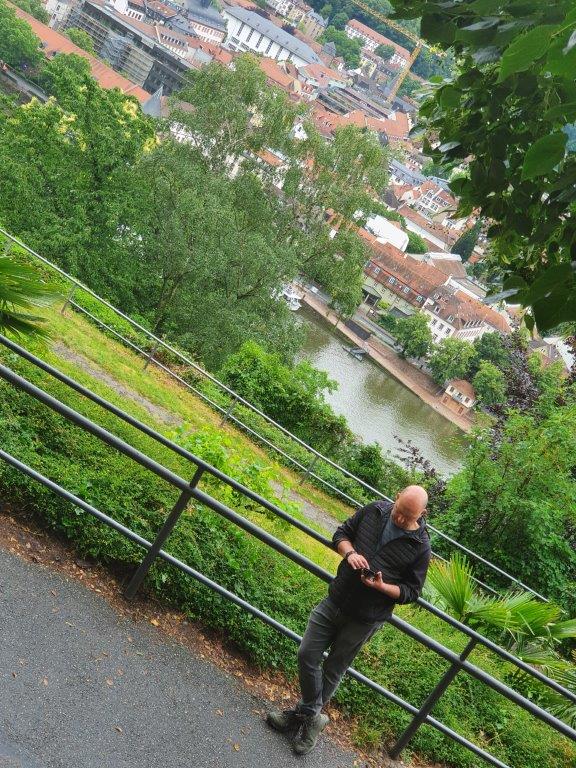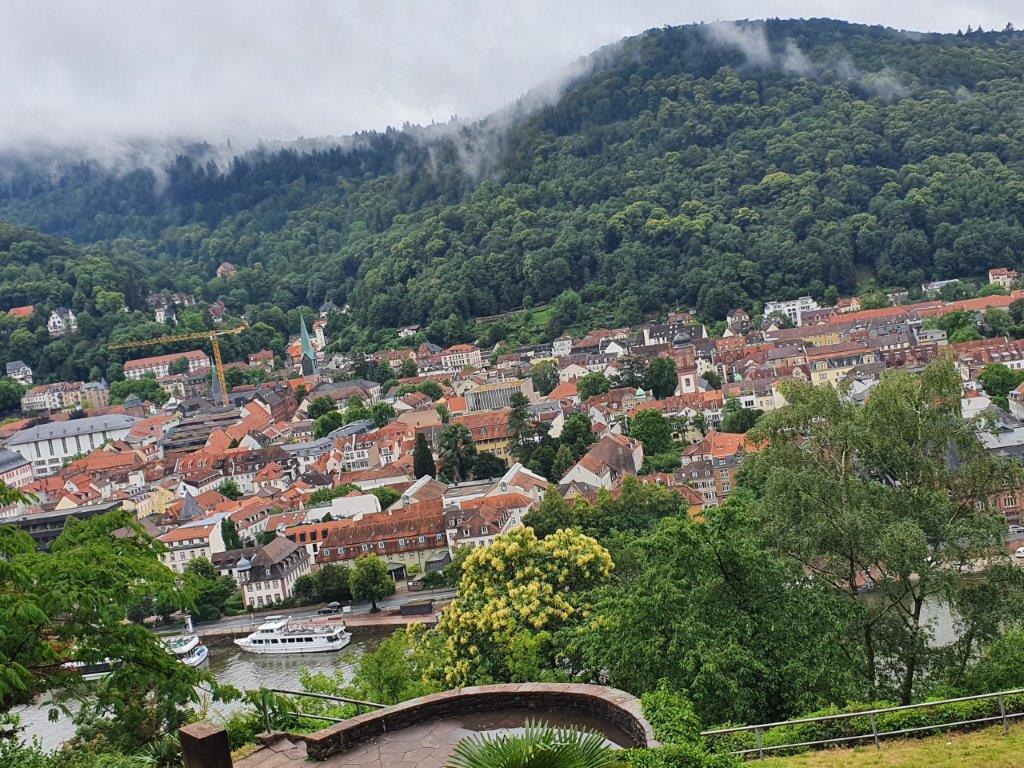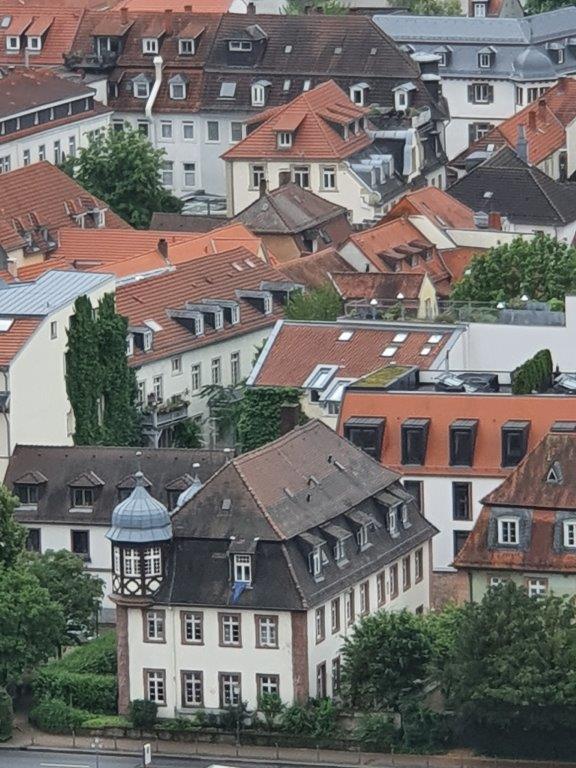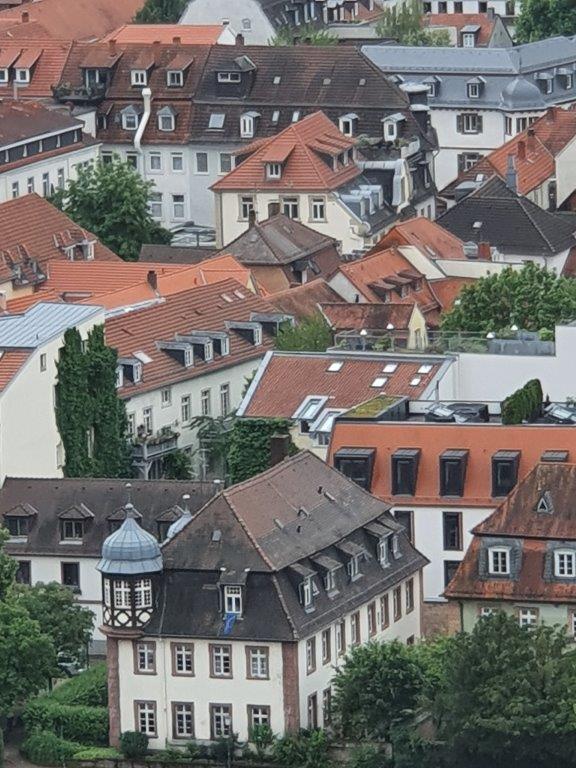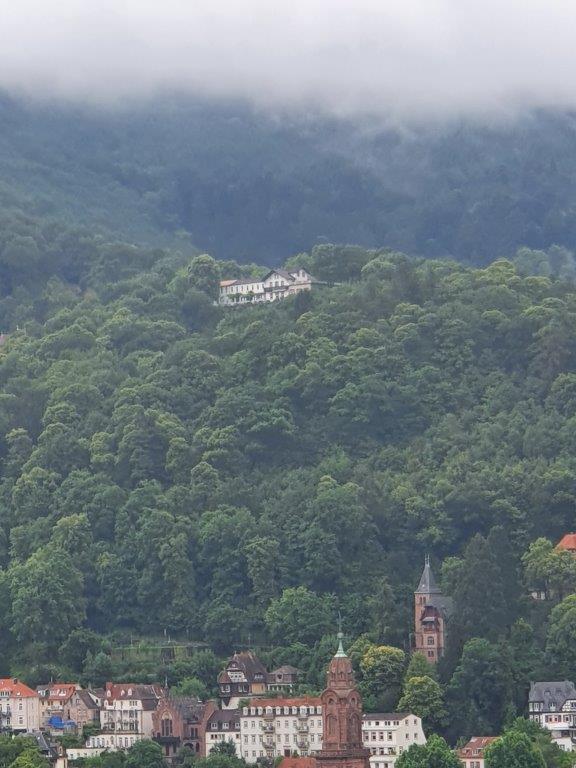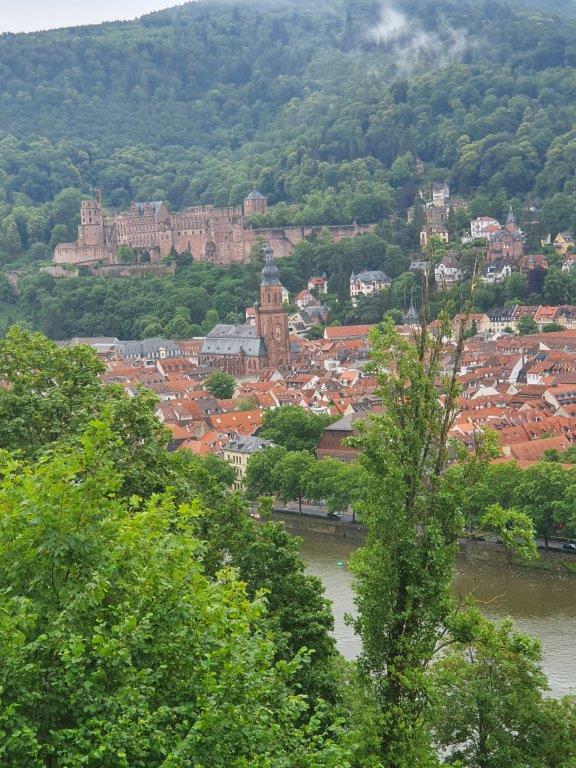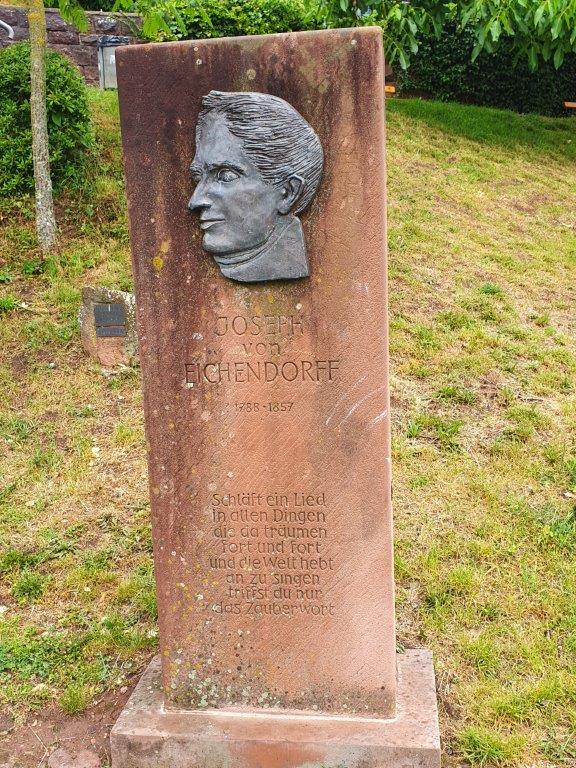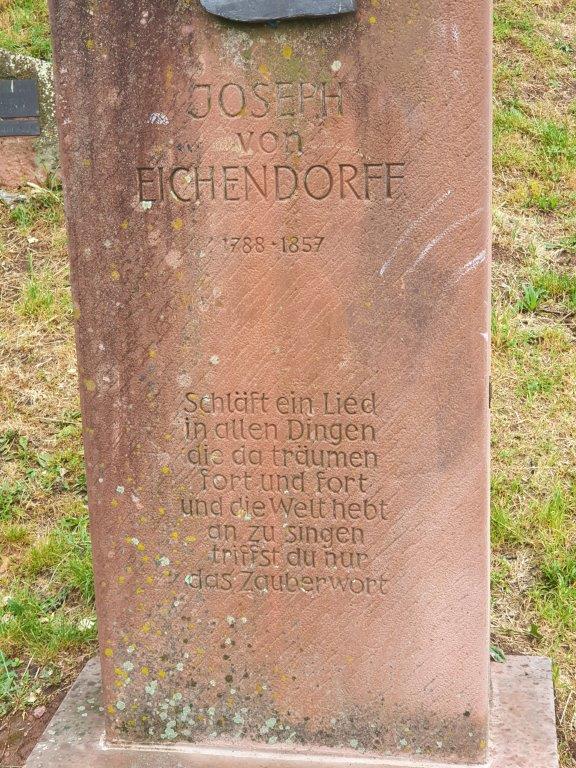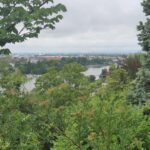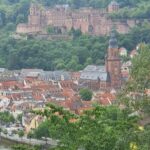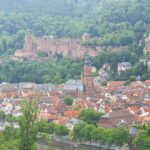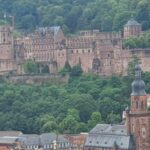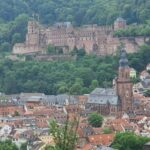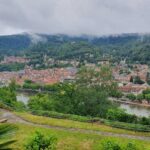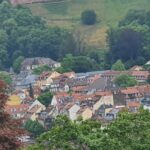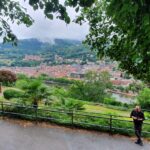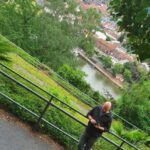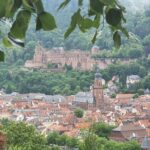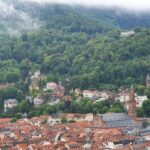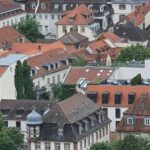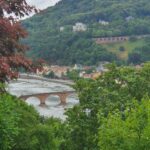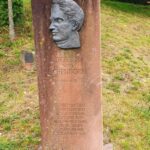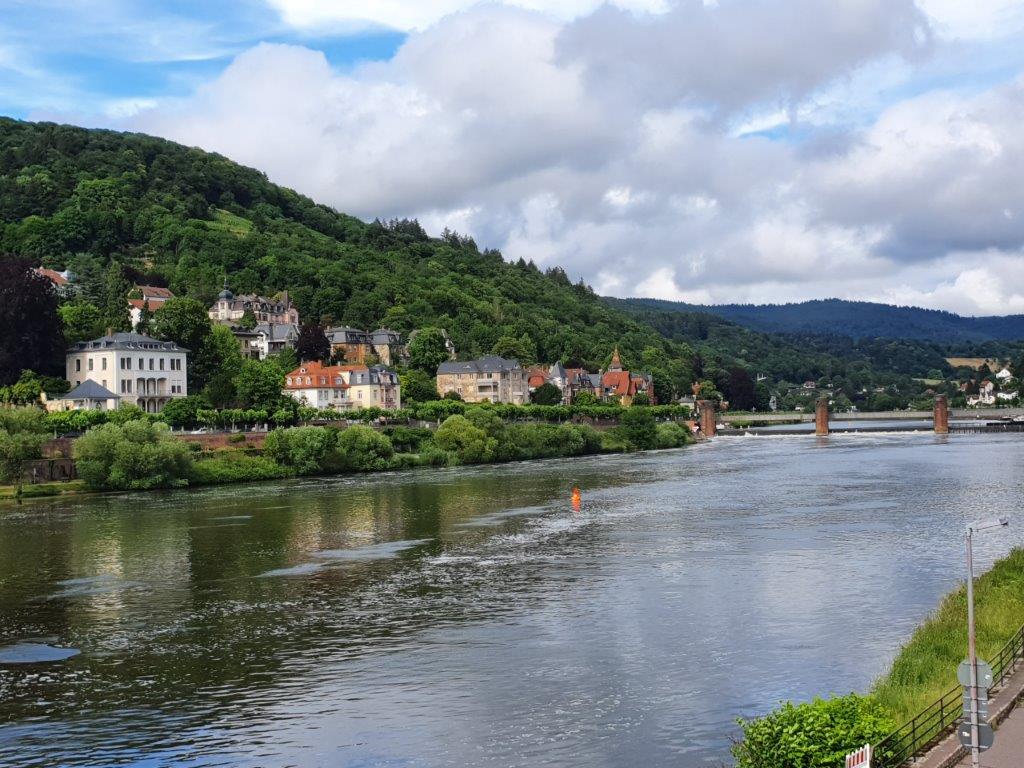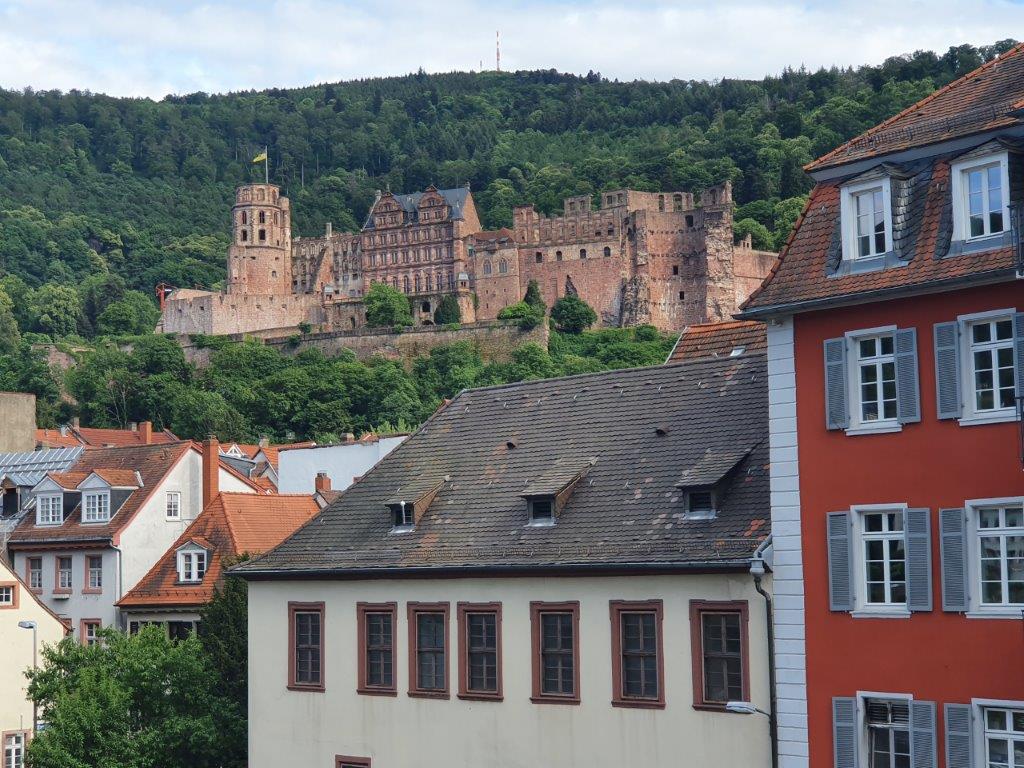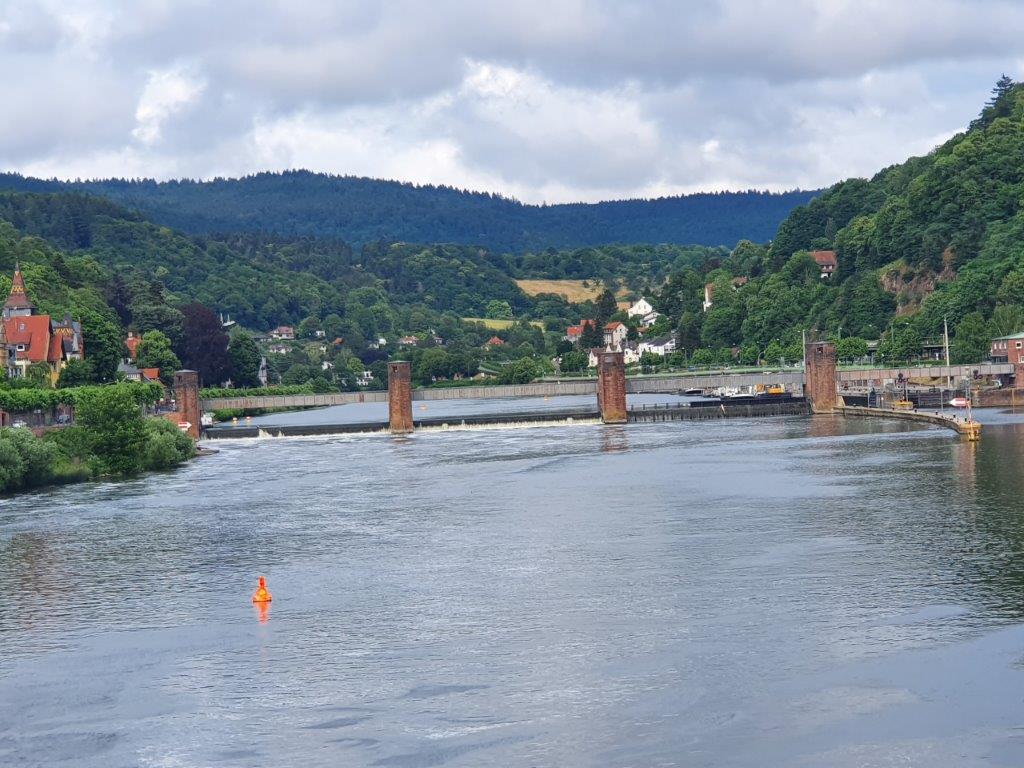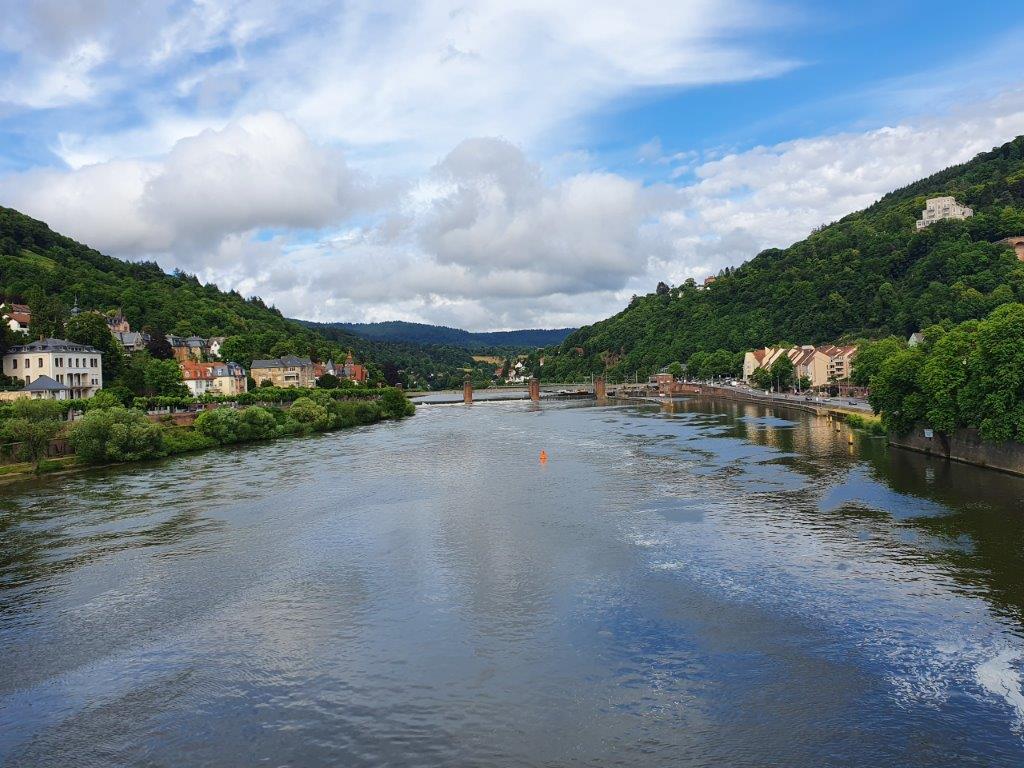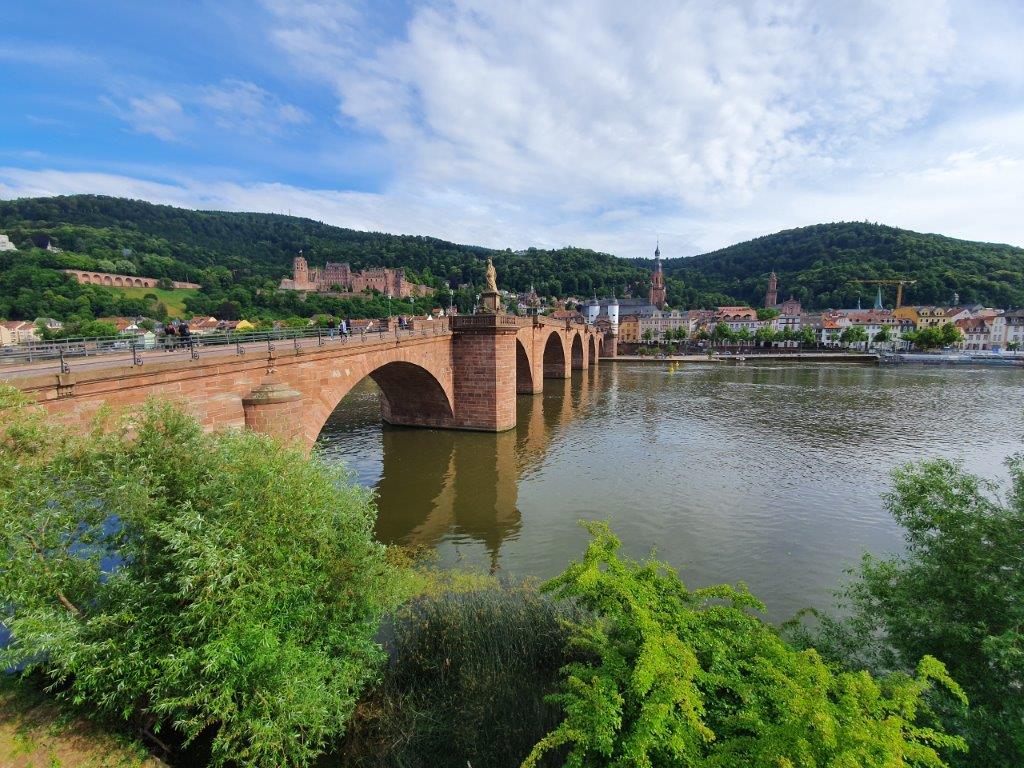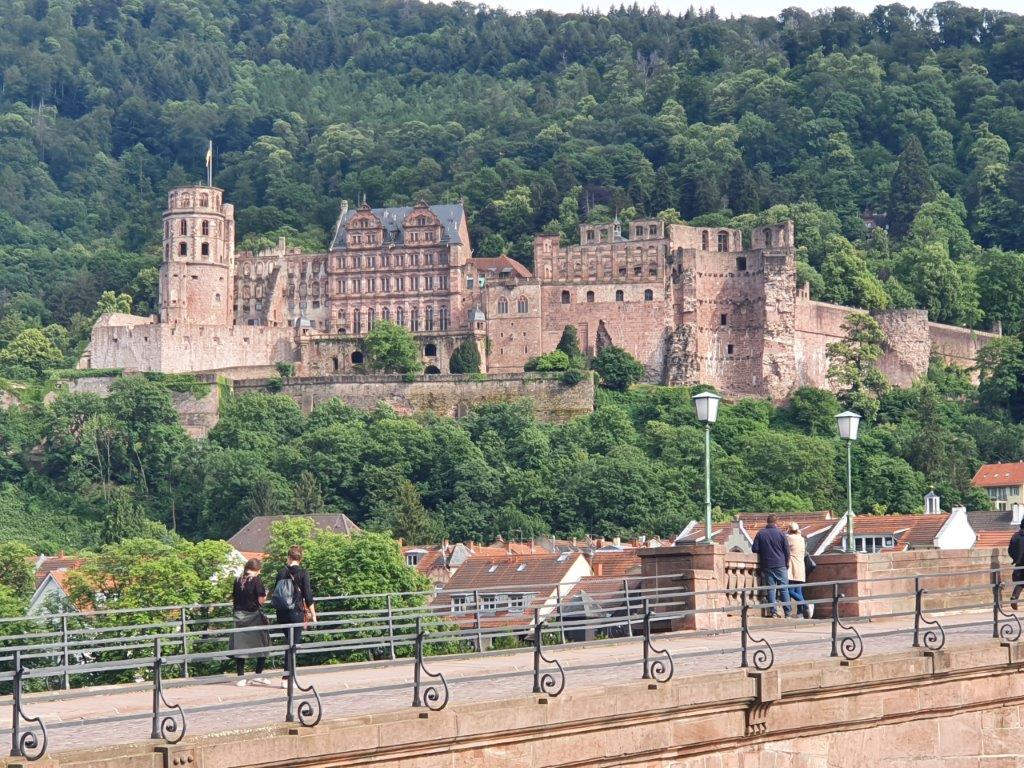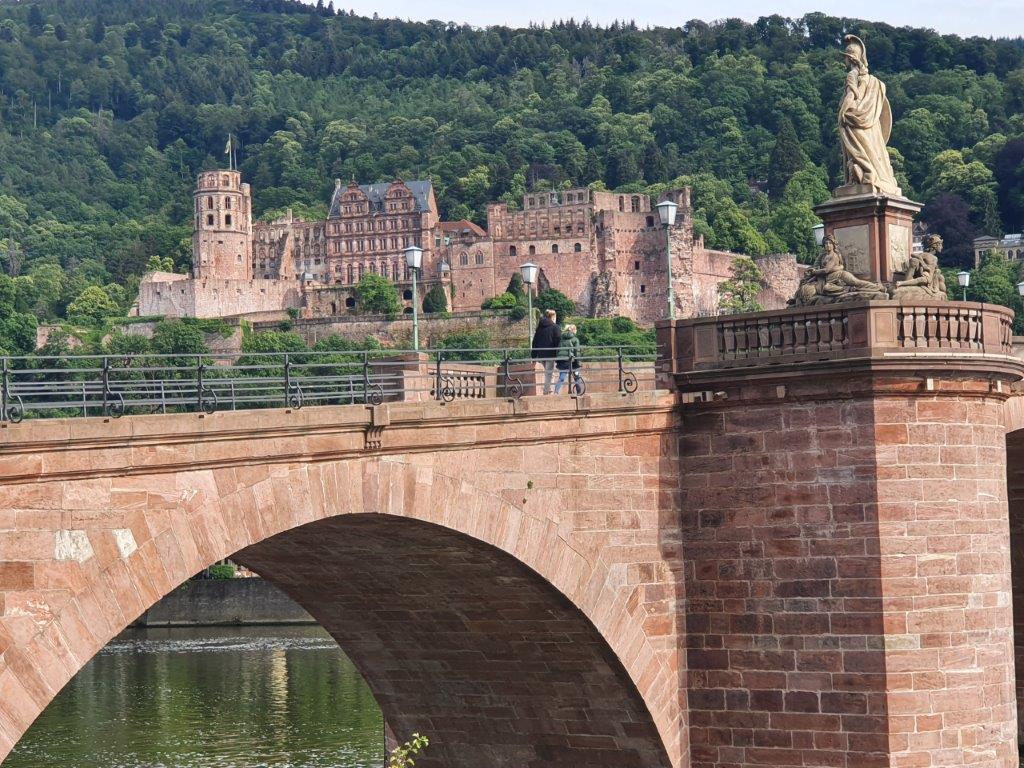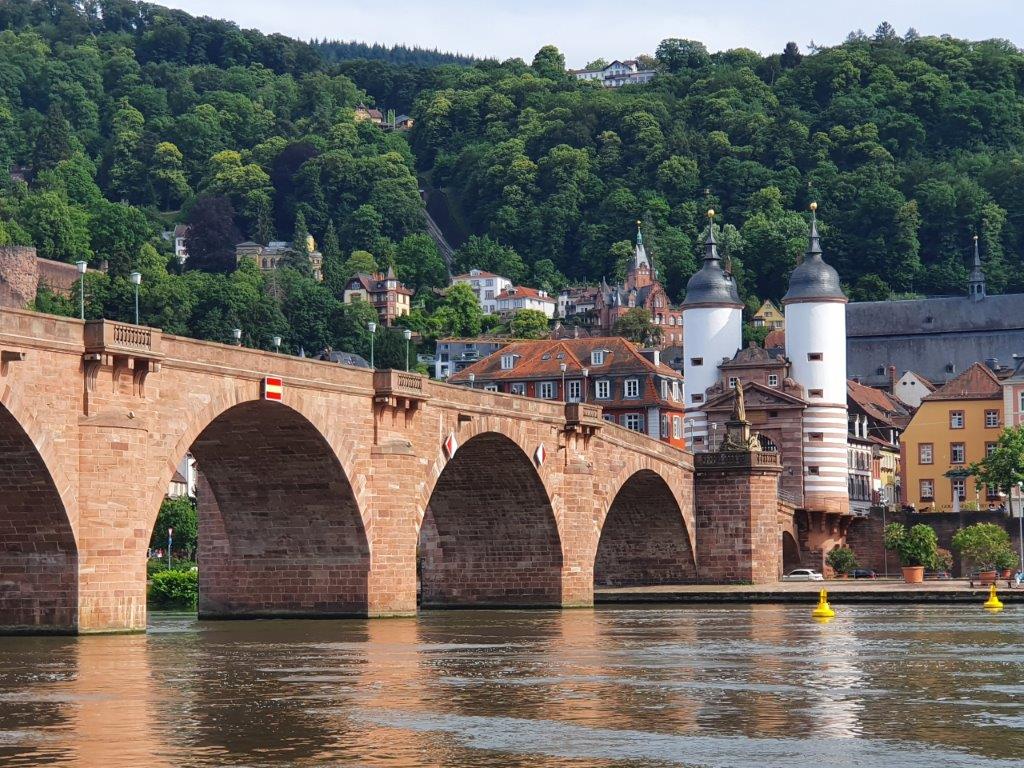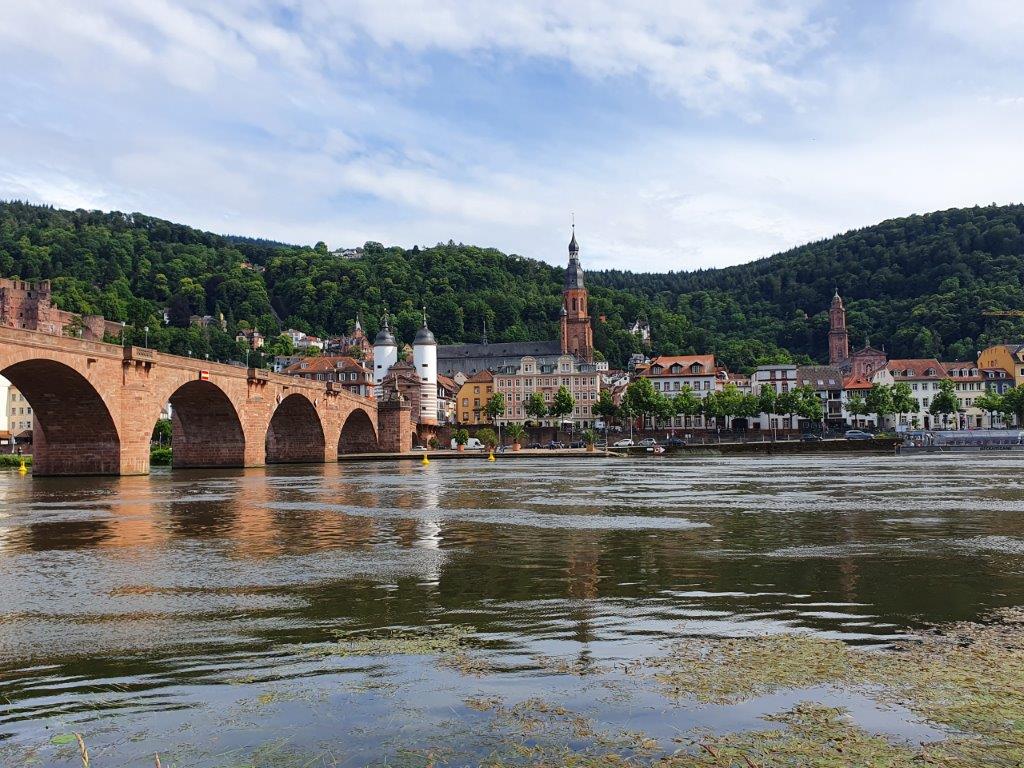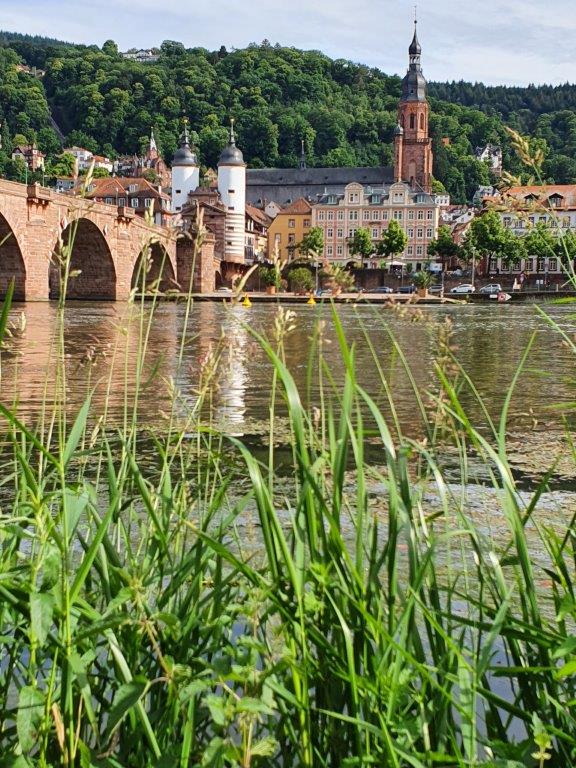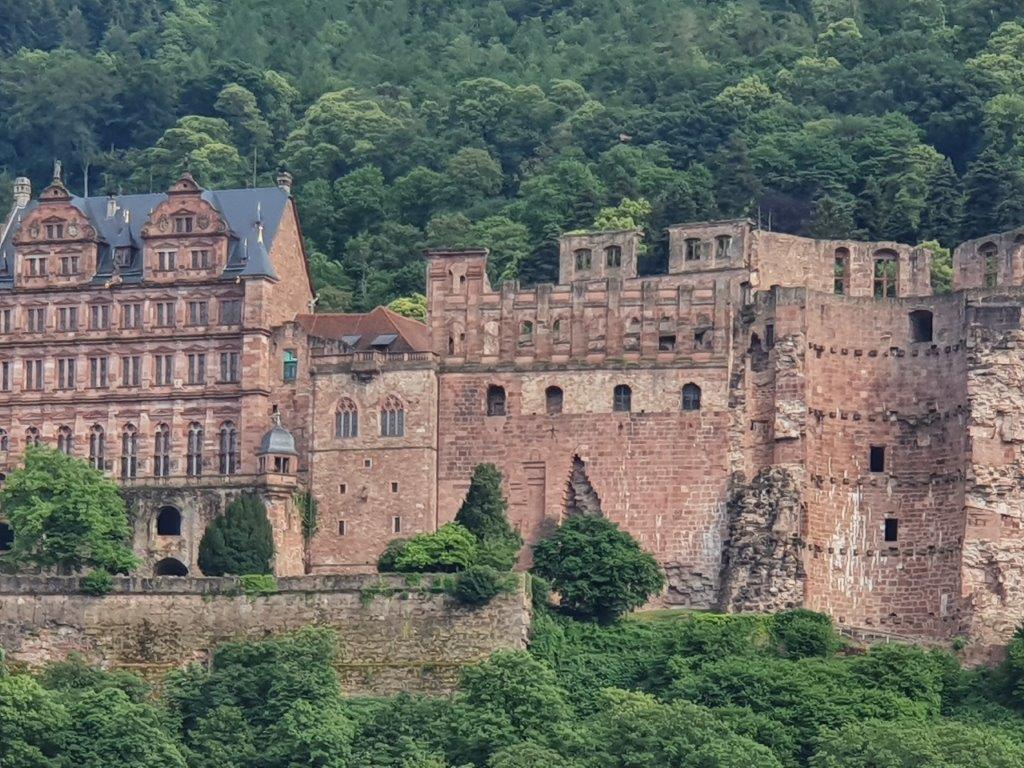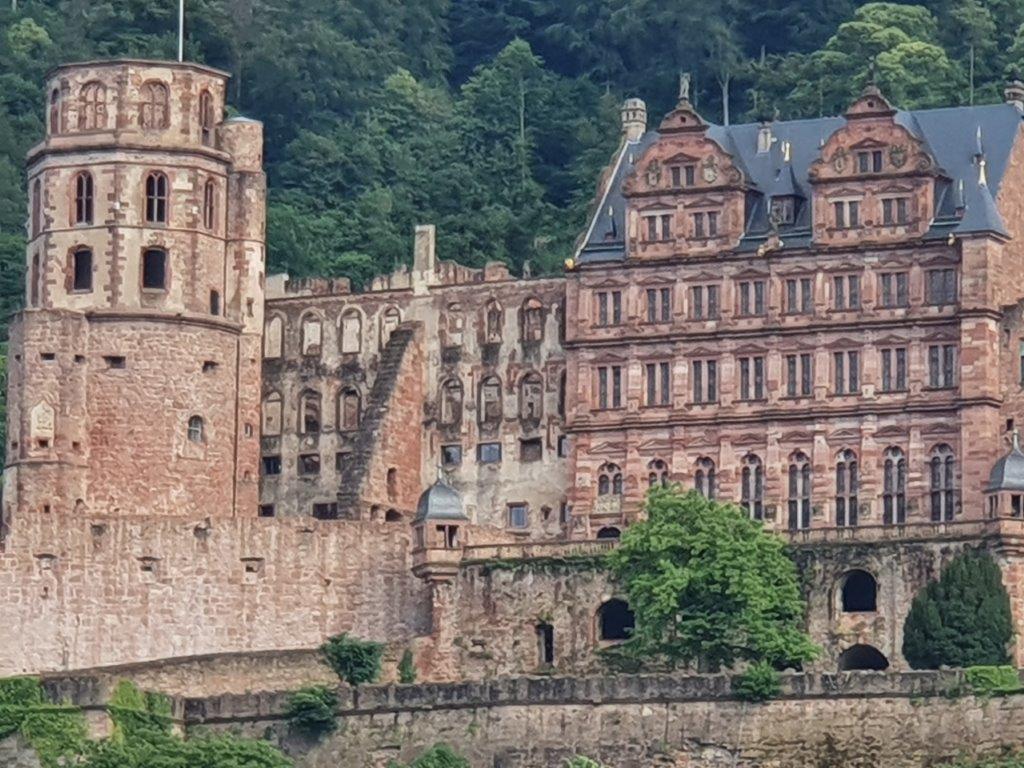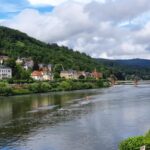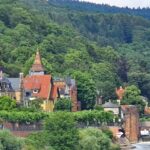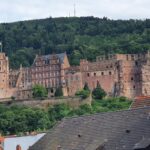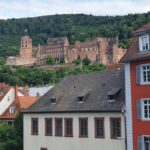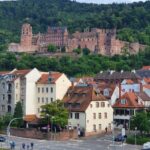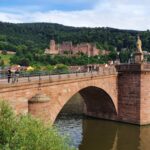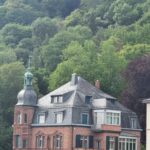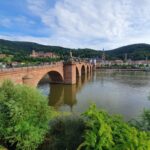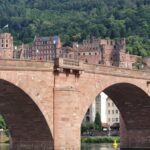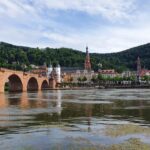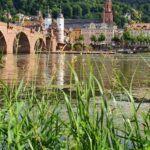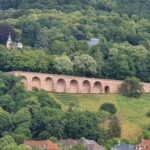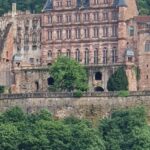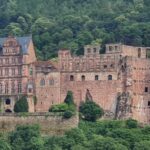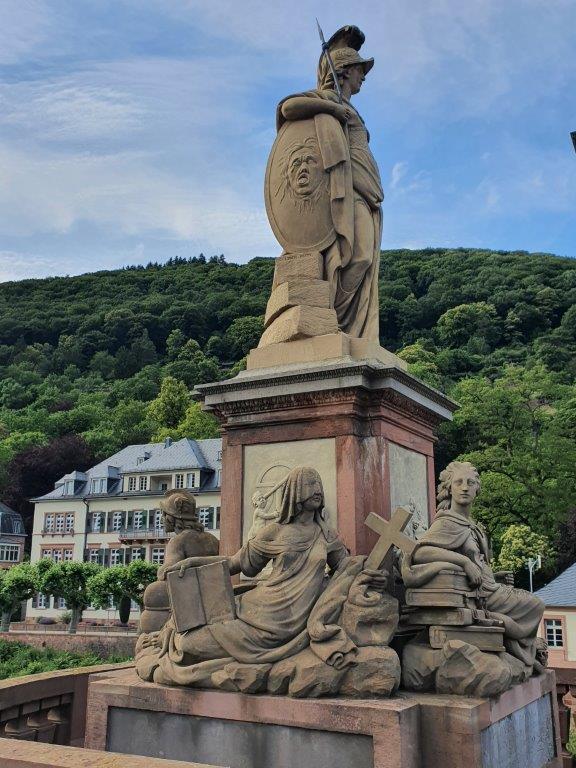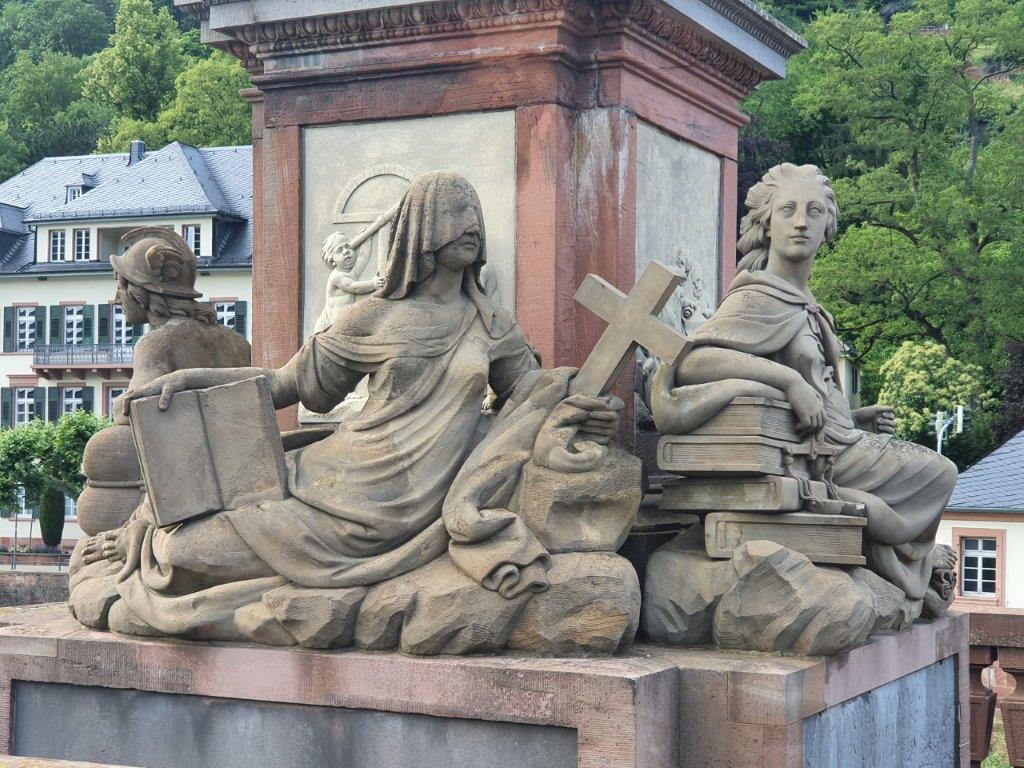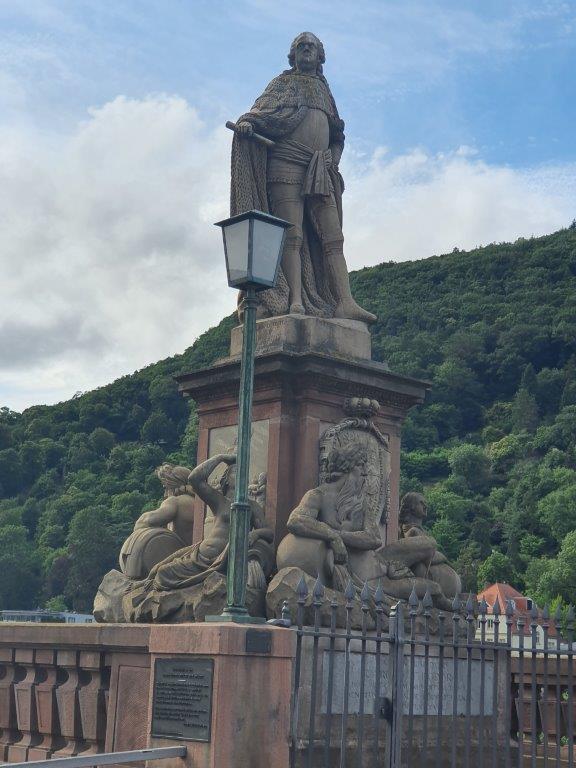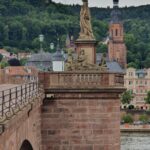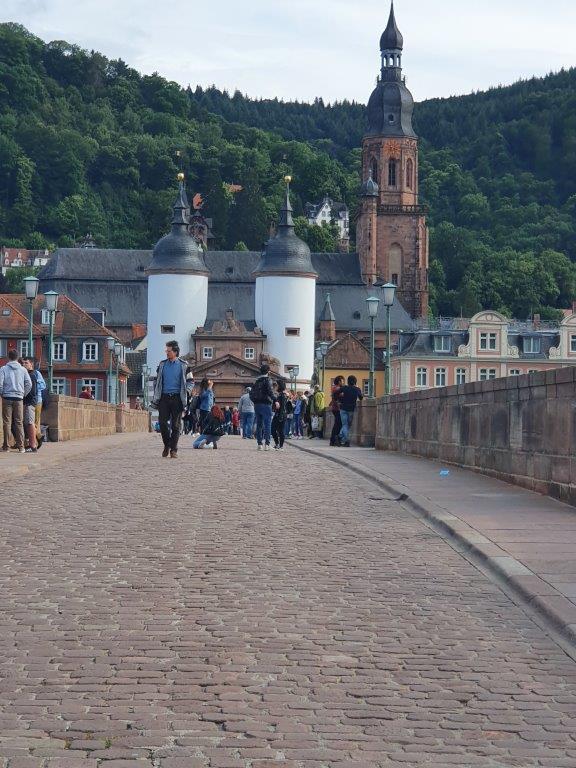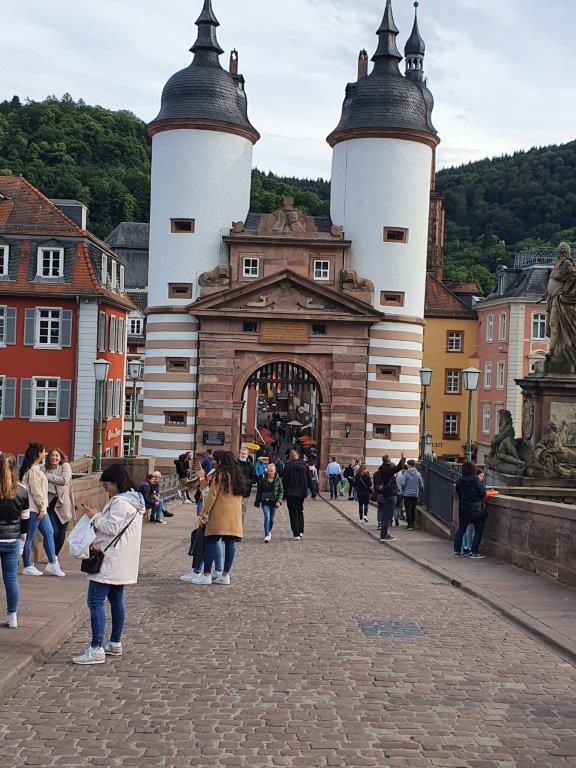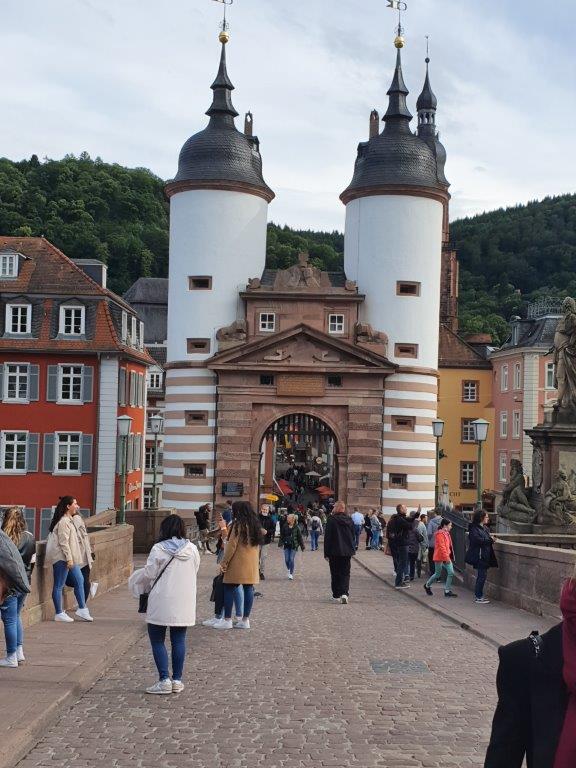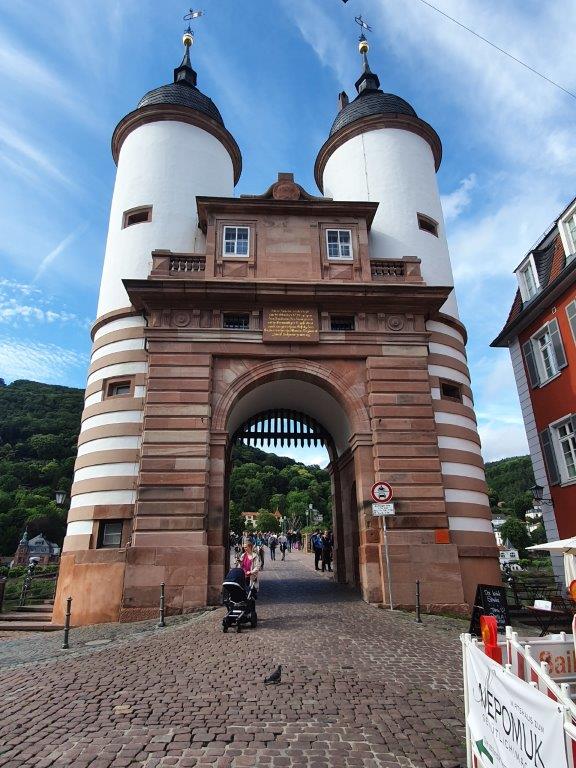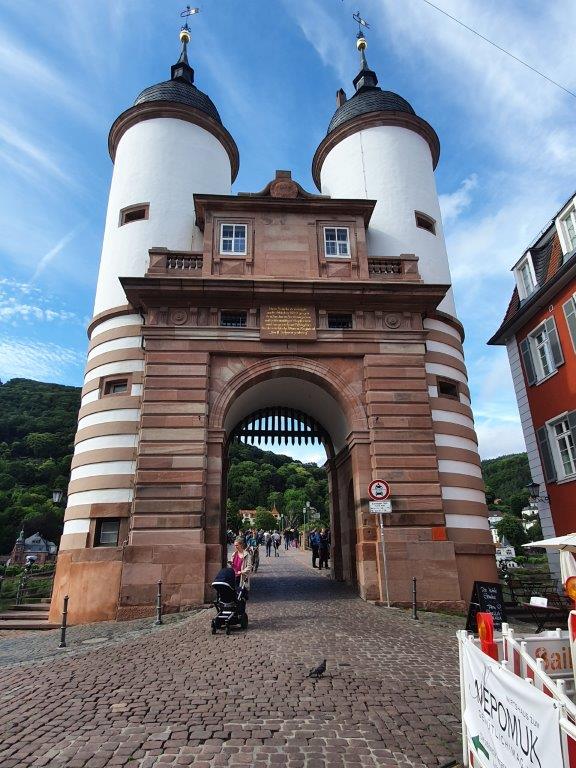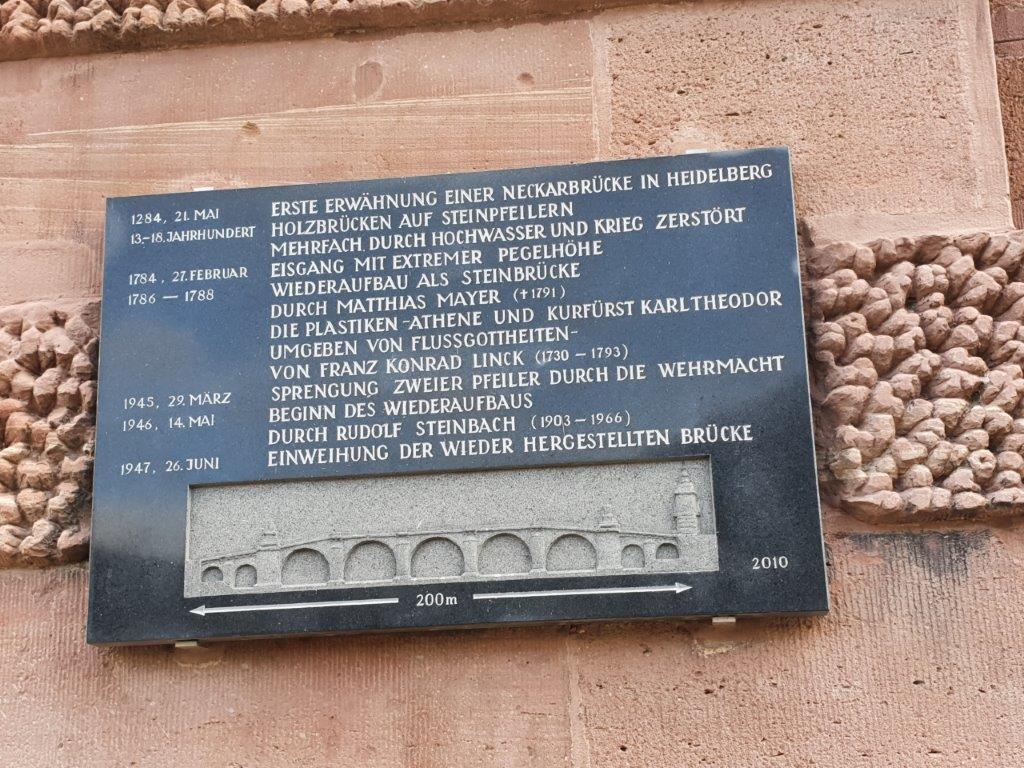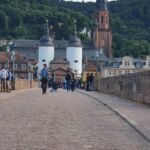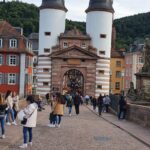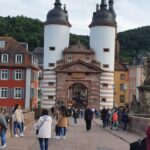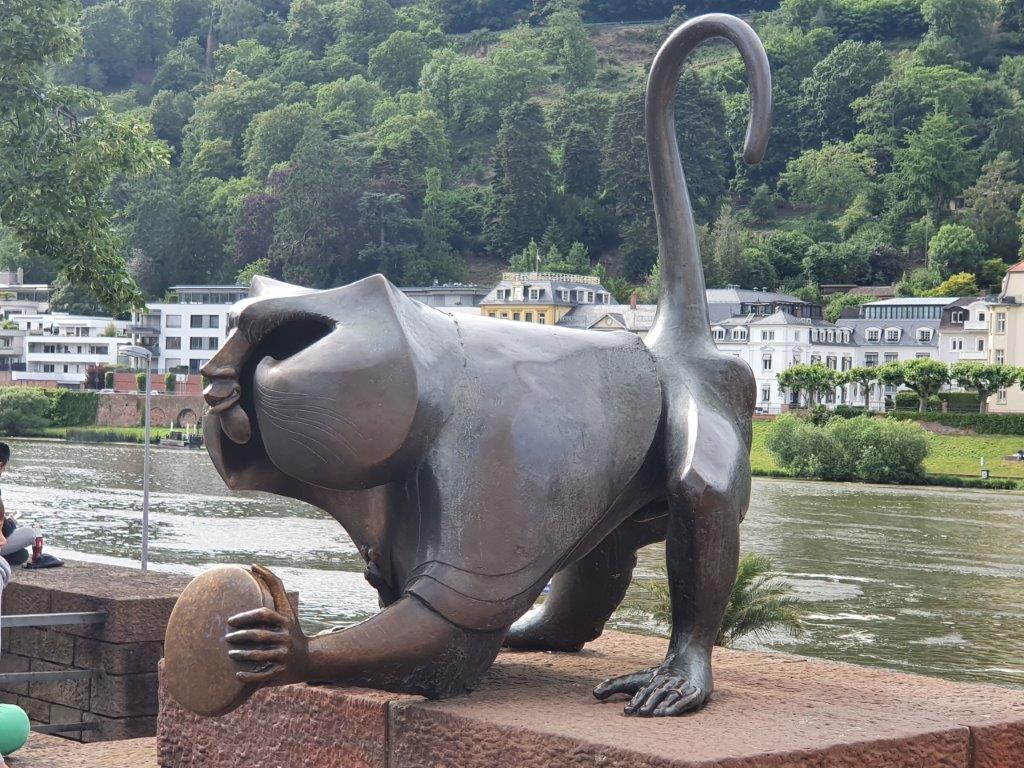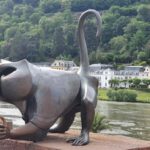A view over Heidelberg – Citywalk 1
2020. The year of the worldwide Corona crisis. The Wandelgek decided it would be irresponsible to travel this year. But a small trip to Germany by car, only with close relatives, had to be possible. It was my dad’s 80th birthday and he had expressed the wish to return to Heidelberg where he had been before I think in the 50’s or 60’s.
And so we decided to go there with my family (Parents and brother) 🙂
We arrived early in the afternoon in Heidelberg…
We had rented a large apartment in the Old Town…
In this blogpost I will first show you 2 spots from where you can enjoy an awesome view over Heidelberg and I will tell you a bit more about its history and the first impression I had of this awesome German city.
Heidelberg is a university town in the German state of Baden-Württemberg, situated on the river Neckar in south-west Germany. In the 2016 census, its population was 159,914, of which roughly a quarter consisted of students.
Located about 78 km (48 mi) south of Frankfurt, Heidelberg is the fifth-largest city in Baden-Württemberg. Heidelberg is part of the densely populated Rhine-Neckar Metropolitan Region.
Heidelberg University, founded in 1386, is Germany’s oldest and one of Europe’s most reputable universities. Heidelberg is a scientific hub in Germany and home to several internationally renowned research facilities adjacent to its university, including the European Molecular Biology Laboratory and four Max Planck Institutes. The city has also been a hub for the arts, especially literature, throughout the centuries, and it was designated a “City of Literature” by the UNESCO Creative Cities Network.
Heidelberg was a seat of government of the former Electorate of the Palatinate and is a popular tourist destination due to its romantic cityscape, including Heidelberg Castle, the Philosophers’ Walk, and the Baroque old town.
One of the very 1st things we did was visiting a spot from where we could enjoy the view over the old town…
What almost immediately struck me when looking down upon Heidelberg, was that it seemed very old and intact, meaning that it looked like the city had not suffered from bomb raids in the second world war. It certainly looked like all or most of the ancient buildings in the old town had survived tha ages and same for the old bridge crossing the River Neckar.
Heidelberg, unlike many other cities in Germany, was not targeted by Allied bombing raids during the war. A popular belief is that Heidelberg escaped bombing in World War II because the U.S. Army wanted to use the city as a garrison after the war, but, as Heidelberg was neither an industrial center nor a transport hub, it did not present a tactical or strategic target. Other notable university towns, such as Tübingen and Göttingen, were spared bombing as well. Allied air raids focused extensively on the nearby industrial cities of Mannheim and Ludwigshafen.
Geography
Heidelberg is in the Rhine Rift Valley, on the left bank of the lower part of the Neckar in a steep valley in the Odenwald. It is bordered by the Königsstuhl (568 m) and the Gaisberg (375 m) mountains. The Neckar here flows in an east–west direction. On the right bank of the river, the Heiligenberg mountain rises to a height of 445 meters. The Neckar flows into the Rhine approximately 22 kilometres north-west in Mannheim. Villages incorporated during the 20th century stretch from the Neckar Valley along the Bergstraße, a road running along the Odenwald hills.
Heidelberg is on European walking route E1 (Sweden-Umbria).
The views over Heidelberg are nothing short of spectacular. A small part of Heidelberg is north of the River Neckar and from the river, the hills immediately rise. Somewhat above is the Filosofen Weg, from which there is access to multiple viewing points, like the one at the Filosofen Garten (Philosopher’s Garden).
See this map:
The citywalk part 1:
I created this citywalk in two parts of which part 1 is described in this blogpost. This part deals with the walk on the opposite side of the river Neckar, starting at the Heidelberg Central Station, crossing the River Neckar, ascending towards the Philosophenweg and descending again to the Old Bridge.
(The 2nd walk will start at the Old Bridge and end at the Central Station of Heidelberg, but alternatively it can be started from and ended at the Central Station too.)
![]() Start in front of Heidelberg Central Station. Walk straight ahead over the Willy Brandt Platz towards the Lessingstraße, but turn left before reaching that. This smaller street is also named Willy Brandt Platz.
Start in front of Heidelberg Central Station. Walk straight ahead over the Willy Brandt Platz towards the Lessingstraße, but turn left before reaching that. This smaller street is also named Willy Brandt Platz.
![]() Keep going straight ahead until you reach the Kurfürstendam Anlage. Now turn right until you get to the Lessingstraße and turn left into that street.
Keep going straight ahead until you reach the Kurfürstendam Anlage. Now turn right until you get to the Lessingstraße and turn left into that street.
The first part of the walk is a brisk walk towards the Neckar River. It is through modern Heidelberg also called Weststadt
. It is not a very interesting part of Heidelberg in a historic context. That’s why I will not provide you with any indepth details regarding this walk until we’ve reached the River Neckar. Just keep walking 🙂
![]() Keep following this street straight ahead. The name changes from Lessingstraße into Mittermaierstraße. Keep going straight ahead and walk on the right side of the road for a long time, until you reach the River Neckar and the Ernst Walz Brücke.
Keep following this street straight ahead. The name changes from Lessingstraße into Mittermaierstraße. Keep going straight ahead and walk on the right side of the road for a long time, until you reach the River Neckar and the Ernst Walz Brücke.
The River Neckar: You reached the end of the boring part of the walk. Boring but neccesary!
The Neckar (a 362-kilometre-long (225 mi) river in Germany, mainly flowing through the southwestern state of Baden-Württemberg, with a short section through Hesse. The Neckar is a major right tributary of the Rhine. Rising in the Schwarzwald-Baar-Kreis near Schwenningen in the Schwenninger Moos conservation area at a height of 706 m (2,316 ft) above sea level, it passes through Rottweil, Rottenburg am Neckar, Kilchberg, Tübingen, Wernau, Nürtingen, Plochingen, Esslingen, Stuttgart, Ludwigsburg, Marbach, Heilbronn and Heidelberg, before discharging on average 145 m3/s (5,100 cu ft/s) of water into the Rhine at Mannheim, at 95 m (312 ft) above sea level, making the Neckar its 4th largest tributary, and the 10th largest river in Germany. Since 1968, the Neckar has been navigable for cargo ships via 27 locks for about 200 kilometres (120 mi) upstream from Mannheim to the river port of Plochingen, at the confluence with the Fils.
![]()
Cross the bridge but walk on the right side. Near the end of the bridge, just after reaching the embankment, is stairway to the right going down. Take the stairway down.
![]()
Immediately go right and cross the road named Uferstraße. Now turn left and start following the river, which now is on your right hand. You’re following a foot path.
![]() Turn right onto the Bergstraße and ascend until you reach the Philosophenweg where you turn right.
Turn right onto the Bergstraße and ascend until you reach the Philosophenweg where you turn right.
View from the Philosophenweg (Philosophers Road)
The views are phenomenal, looking at a wonderful almost fairy tale like medieval German town, including a medieval bridge and a castle ruin.
 Beneath are some more pictures from the view over the old town and the small Philosophen Gärtchen…
Beneath are some more pictures from the view over the old town and the small Philosophen Gärtchen…
![]()
Keep following the Philosophenweg past the Philosophen Gärtchen towards the Alte Brücke. From the Philosophenweg, is a path named Sclangenweg with stairs going down to the absolutely mesmerizing river front view over the Old Town, at the Old Bridge.
TIP: There is a lower path directly parallel to the river from which the views upwards towards the bridge and Heidelberg Castle are really great.
![]() Cross the Alte Brücke (Old Bridge).
Cross the Alte Brücke (Old Bridge).
The Old Bridge (Die Alte Brücke)
The Karl Theodor Bridge, commonly known as the Old Bridge (Alte Brücke), is an arch bridge in Heidelberg that crosses the Neckar river. It connects the Old City with the eastern part of the Neuenheim district of the city on the opposite bank. The current bridge, made of Neckar sandstone and the ninth built on the site, was constructed in 1788 by Elector Charles Theodore, and is one of the best-known landmarks and tourist destinations in Heidelberg.
On the Old Bridge were several large statues overlooking the River Neckar…
At the second and seventh piers (counted from the Old Town embankment), are the statues of Karl Theodor and Minerva.
At the other side of the Old Bridge is a large city gate…
The bridge gate at the south end of the bridge dates from the Middle Ages (15th century) but it was remodelled between 1786–88.
![]()
Go through the city gate and immediately turn right. There you’ll find the statue of the Brückenaffe (Bridge Monkey/Baboon).
Brückenaffe Statue
Just next to this gate was a modern statue of a baboon which was quite an attraction as a picture magnet.
As early as the 15th century there has been a statue of a monkey on the Old Bridge holding a mirror, which disappeared during the Nine Years’ War. The current statue was designed by Gernot Rumpf and erected in 1979. The statue holds a mirror in one hand and forms the sign of the horns with the other. Below the monkey is a poem by Martin Zeiler written in 1632, reading.
Why are you staring at me?
Haven’t you seen the old Monkey of Heidelberg?
Look to and fro,
There you will find many more of my kind.(Was thustu mich hie angaff en?
Hastu nicht gesehen den alten Affen zu Heydelberg?
Sich dich hin und her,
Da findestu wol meines gleichen mehr.)
Tourists can place their heads within the monkey’s head. Local legend has it that rubbing the mirror brings good luck, rubbing the fingers ensure a return to Heidelberg, and the little bronze-cast mice nearby bring fertility.
![]() The 1st part of the walk ends here at the Brückenaffe (Baboon statue).
The 1st part of the walk ends here at the Brückenaffe (Baboon statue).
![]() Click here for the 2nd part of the walk which is a walk through the Heidelberg Altstadt.
Click here for the 2nd part of the walk which is a walk through the Heidelberg Altstadt.


